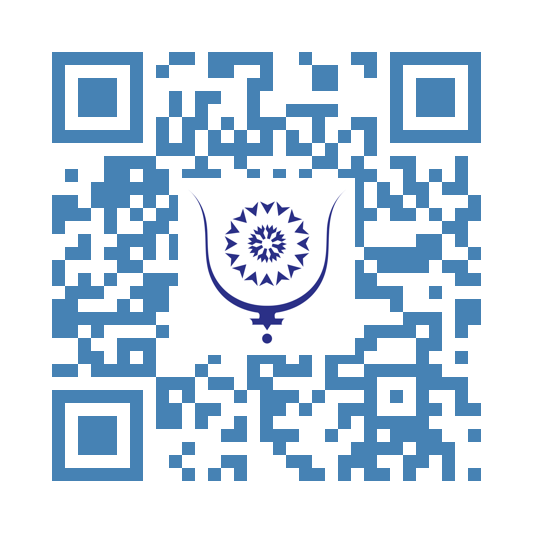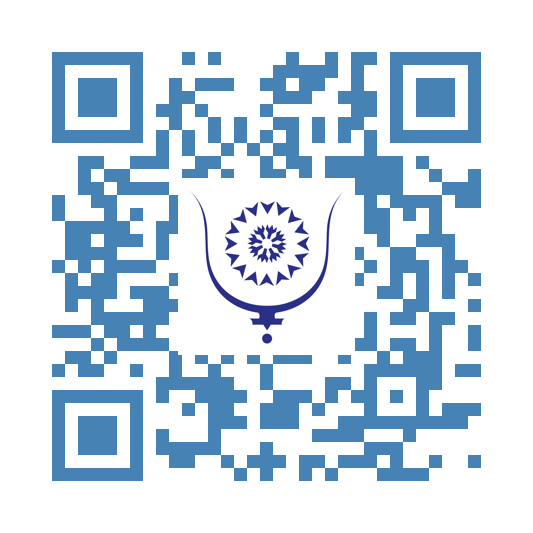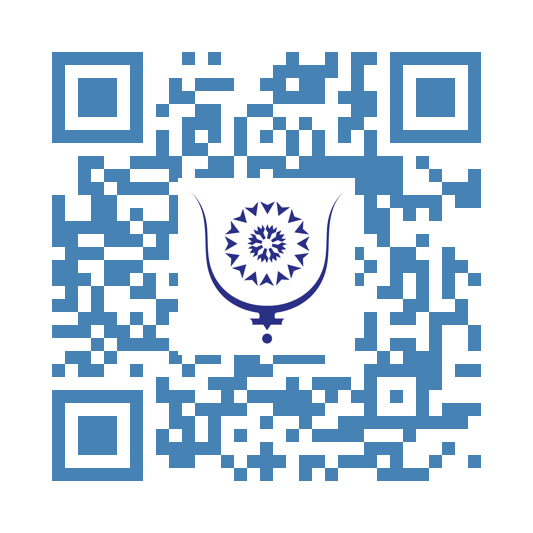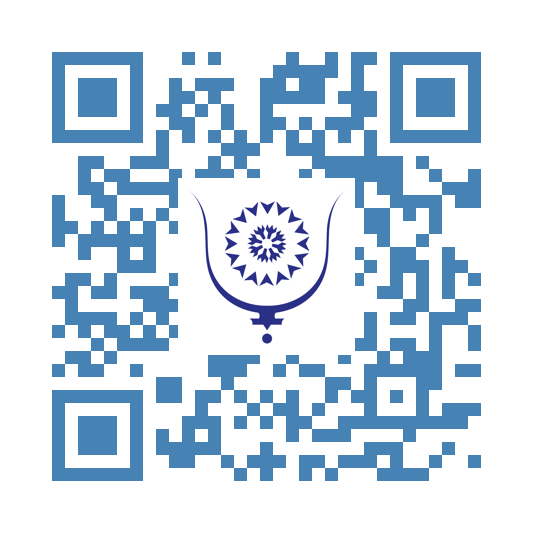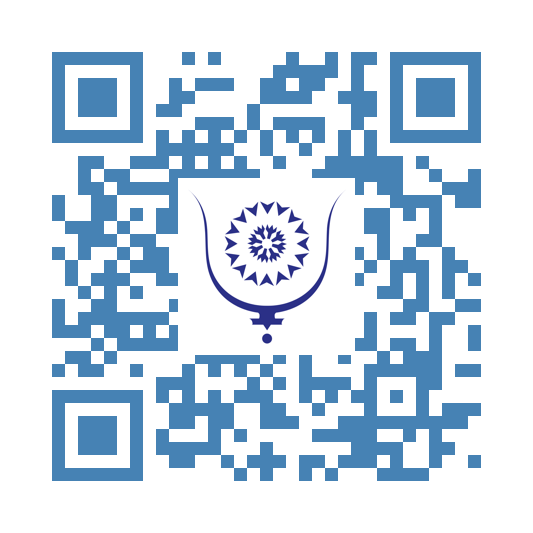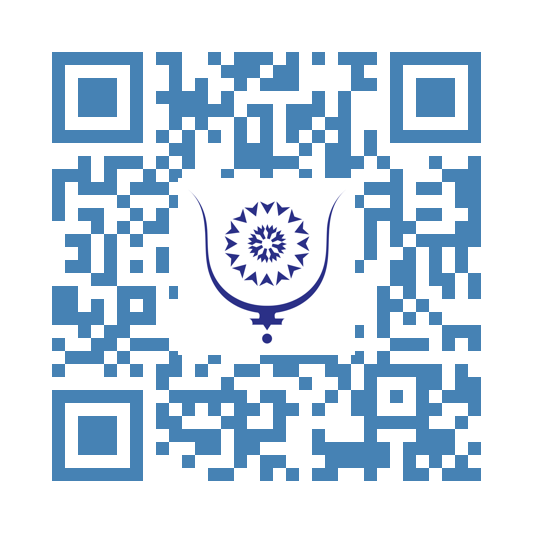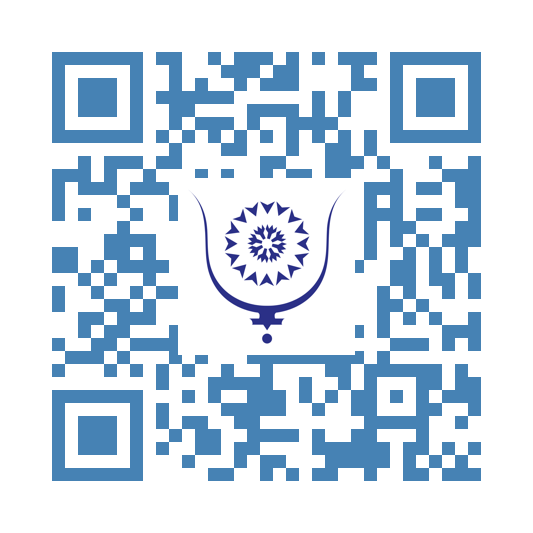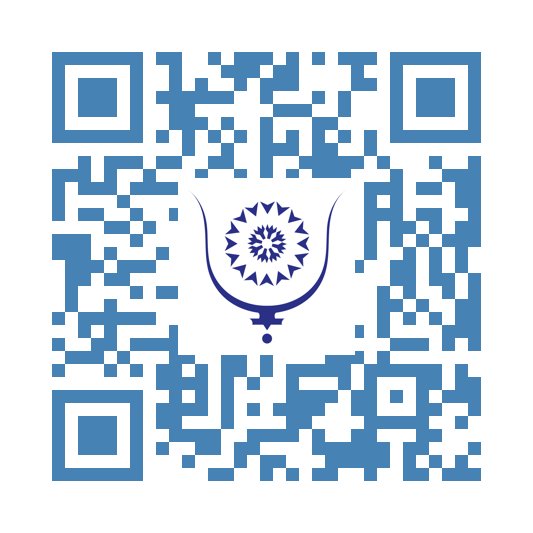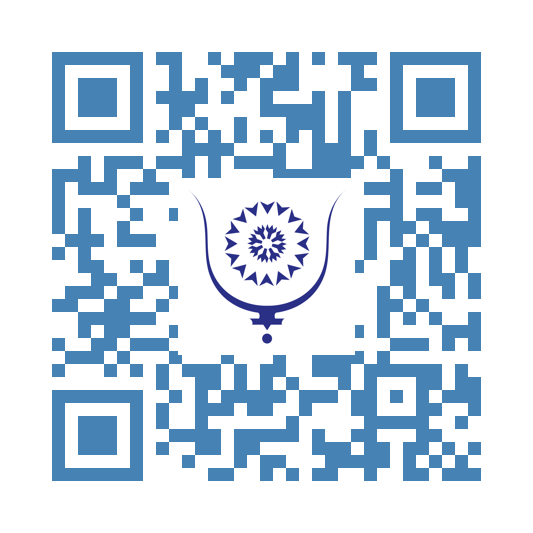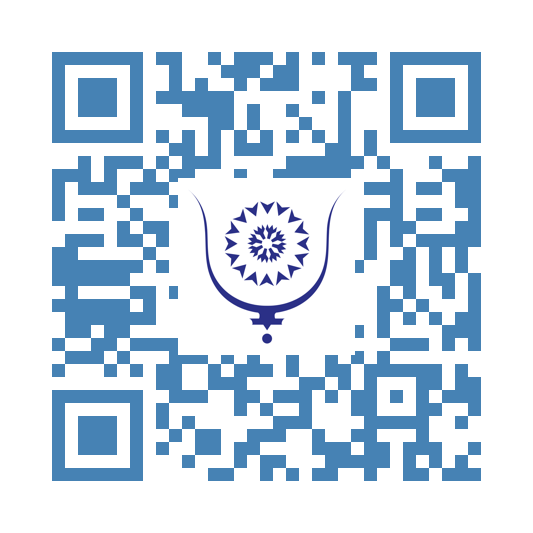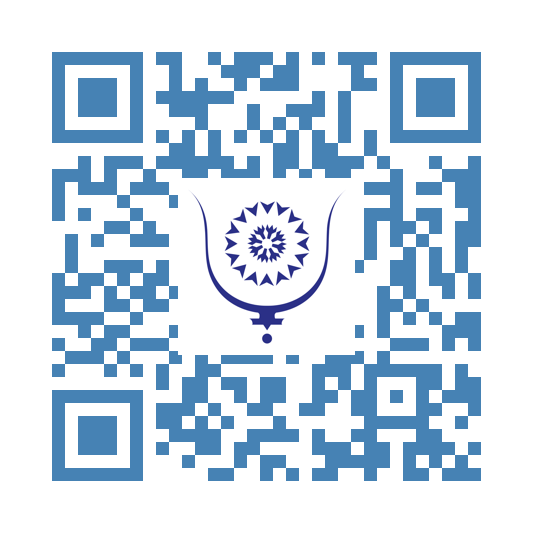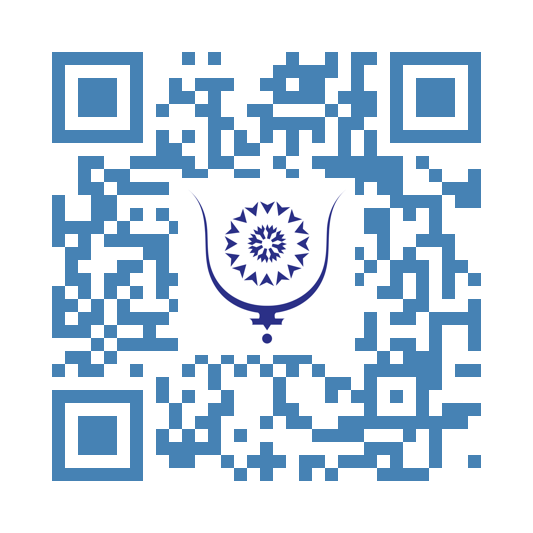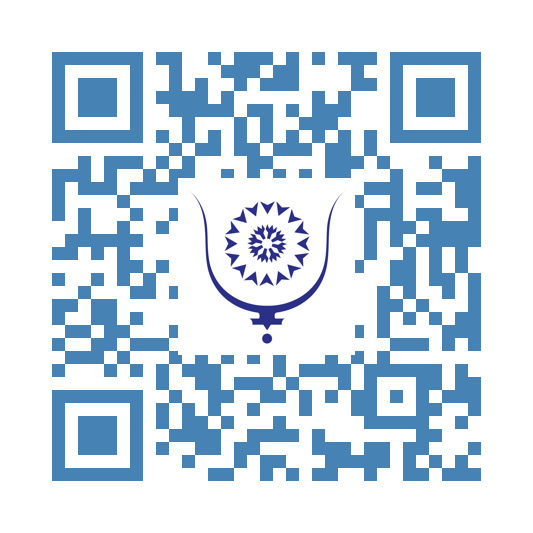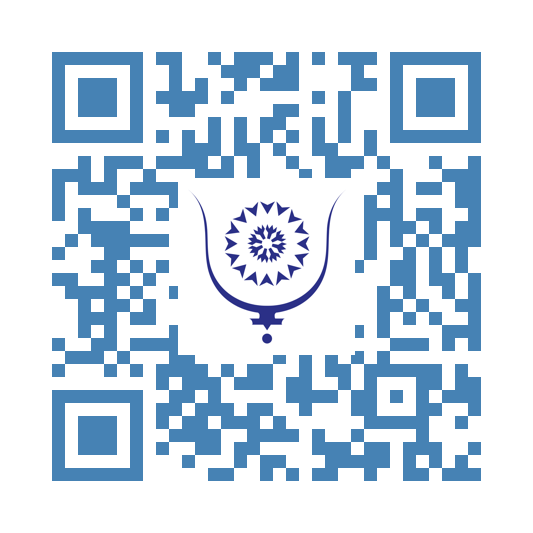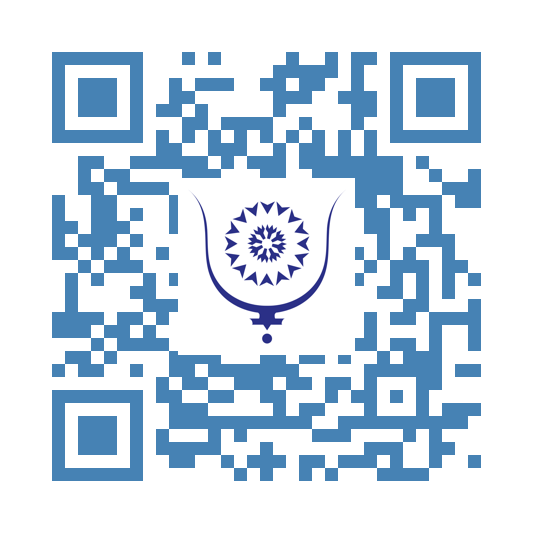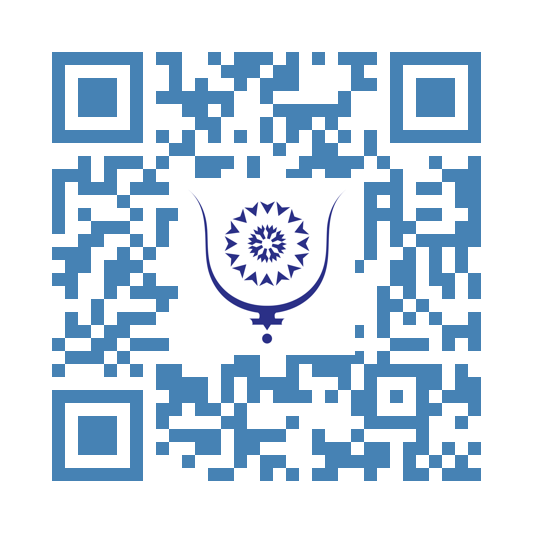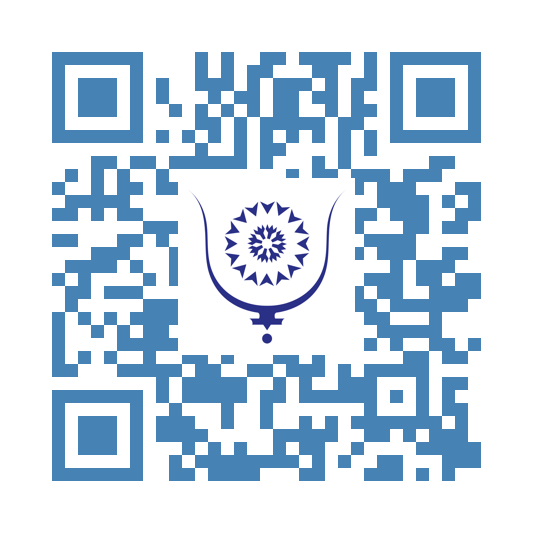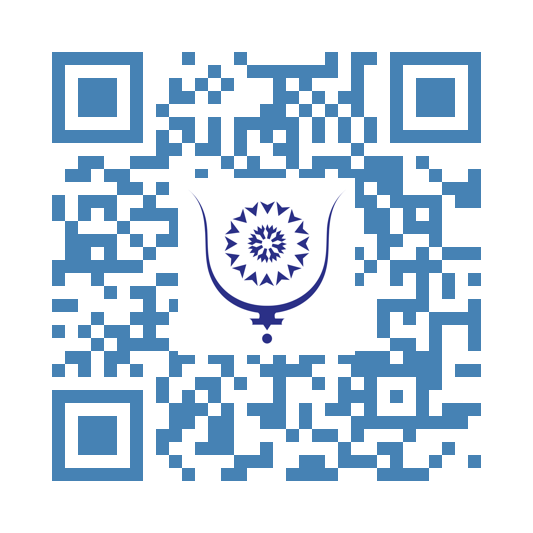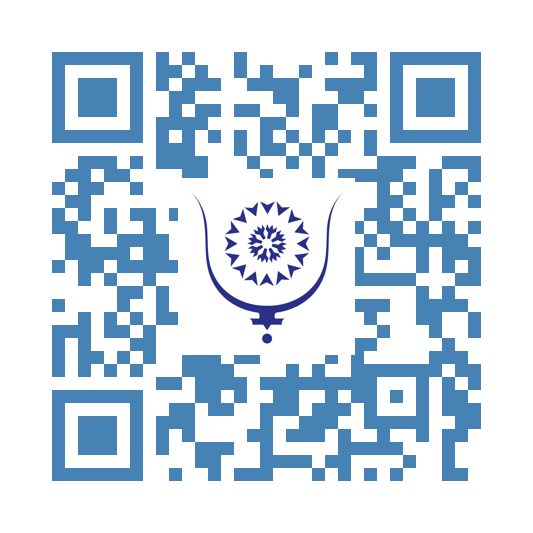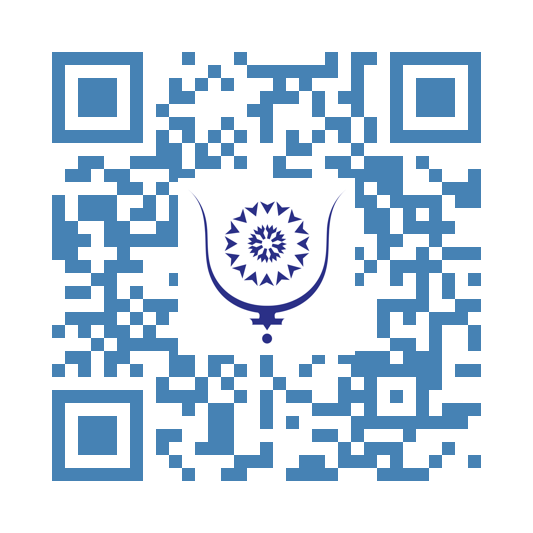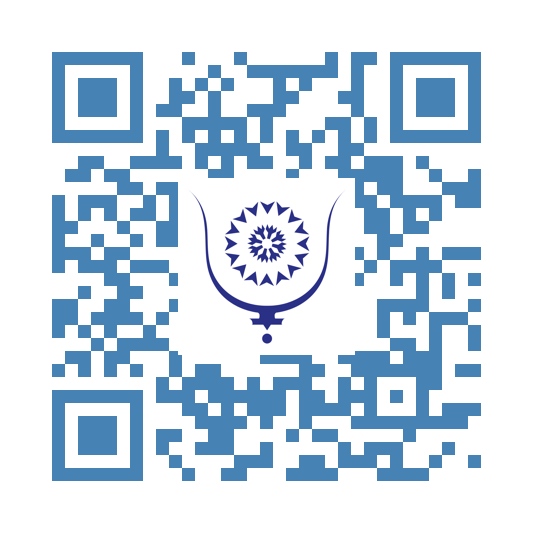The African Union and the "Ten Commandments" for improving women's education
3748
The African Union and the "Ten Commandments" for improving women's education
A piece of information has just caught my attention and aroused my astonishment, so obvious is it. It is a reminder of one of the known chronic deficits of the African continent, at the root of its socio-economic situation and its difficulties in leaving the zone of systemic precariousness of a large fringe of the population.
On 4 and 5 July 2024, African Unity organised a gathering of great importance, which was given the name of Conference.
The conference was devoted to debating the importance of education for girls and women. Of course, for the sake of fashion and to fit in with a modern narrative, we talked about strategy.
The conference discussed a strategy for increased access to "inclusive, lifelong, quality and relevant learning in Africa".
My astonishment stems from the fact that it was only in 2024 that African Unity finally took an interest in a recurring problem that has been present throughout the continent since the dawn of time. A problem that everyone believes to be one of the main causes of the continent's underdevelopment and the pervasive precariousness of its population.
In fact, for a very long time now, the pan-African organisation, whether in its old form or in its new one, has been floundering in so-called political difficulties. It lives to the rhythm of petty conflicts and never-ending conciliations between petty warlords imbued with imported ideologies in which they themselves do not believe, but who cares? All it does is denounce or try to appease the perpetrators of massacres in the name of causes that are often in the interests of this or that interest, without ever succeeding in imposing or settling anything...
Finally, in July 2024, the Commissioner dedicated to this mission within African Unity will give us his prophecy. In essence, he said: "As Member States, we must redouble our efforts to support girls' education by acting on knowledge and skills. Let's support girls' education at primary, secondary and even tertiary levels, so that our girls complete their studies successfully and become very responsible citizens, capable of making very sound decisions".
Fantastic. All we have to do, Commissioner, is prepare our girls and women to make the right decisions... What decisions are we talking about, Commissioner: stopping the conflicts that are making more than one rich region tired, stopping the squandering of public money on far-fetched projects and misguided policies, creating work for young people by encouraging investment, primarily in the country itself, helping to improve governance for the benefit of all, improving health services and other public necessities? To do this, Commissioner, we need to go further and deeper and question the political systems in particular and the way in which power is seized in certain countries...
Thank you, Commissioner, for reminding Africa of something it should have been doing a long time ago. You would just have added 'so much time wasted on infighting and idiotic debates instead of addressing the continent's real problems'.
What's even more astonishing is that, in order to supposedly help overcome the endemic situation of women on the continent, we are still making recommendations...
As the Conference was only consultative, the only outcome was obviously the publication of recommendations. There were ten of them.
Even Moses has not been able to impose his recommendations for thousands of years, despite the divine words: "You shall not kill, you shall not steal, you shall not bear witness".
Commissioner, wouldn't it have been wise to recall these Commandments of Moses as a preamble to the Conference's recommendations?
Perhaps...
In its 'Ten Commandments', for example, the Conference calls on the parties concerned, those who finance or can do so, to put a little more money into education budgets... The problem that the conference did not address, but did it have the courage to do so, is how to ensure that this money, which is supposed to be forthcoming, will be protected so that it is really spent on education for education's sake... and does not, as in many cases, end up in the pockets and distant accounts of those who are supposed to manage it for the good of Africans...
Share:
The African Union and the "Ten Commandments" for improving women's education
copy:
https://bluwr.com/p/21506432
L'Union Africaine et les "dix commandements" pour améliorer l'éducation des femmes en Afrique
2176
Une information vient d’attirer mon attention et susciter mon étonnement, tellement elle rappelle une évidence. Elle rappelle l'un des déficits chroniques connus du continent africain, à l’origine de sa situation socioéconomique et de ses difficultés à quitter la zone de précarité systémique d’une grande frange de la population.
L’Unité Africaine vient d’organiser les 4 et 5 juillet 2024, un rassemblement qualifié de fort important puisqu’on lui a donné le nom de Conférence.
Ladite Conférence a été consacrée à débattre de l’importance de l’éducation des filles et des femmes. Bien évidemment pour faire tendance et s’inscrire dans un narratif moderne on parla de stratégie.
La conférence a donc discuté d’une stratégie pour un accès accru à « un apprentissage inclusif, tout au long de la vie, de qualité et pertinent en Afrique ».
Mon étonnement vient du fait que ce n’est qu’en 2024 enfin, que l’Unité Africaine se soit intéressée à une problématique récurrente, quasi présente, sur l’ensemble du continent depuis la nuit des temps. Un problème que tout un chacun pense être l’une des causes principales du sous-développement du continent et de la précarité omni présente dans sa population.
C’est qu’en fait depuis fort longtemps, l’organisation panafricaine que ce soit dans son ancienne formule ou la nouvelle, ne fait que patauger dans des difficultés dites politiques. Elle ne vit qu’au rythme de conflits mesquins et de conciliations jamais abouties entre petits chefs de guerre imbibés d’idéologies importées, auxquelles ils ne croient pas eux-mêmes mais peu importe. Elle ne fait que dénoncer ou essayer d’amadouer des auteurs de massacre au nom de causes souvent pour le compte de tel ou tel intérêt, sans jamais réussir à imposer ou régler quoi que ce soit…
En fin donc, en juillet 2024, le Commissaire dédié à cette mission au sein de l’Unité Africaine va nous gratifier de sa prophétie. Il dit en substance « En tant qu’États membres, nous devons redoubler d’efforts pour soutenir l’éducation des filles en agissant sur les connaissances et les compétences. Soutenons l’éducation des filles aux niveaux primaire, secondaire et même tertiaire, afin que nos filles terminent leurs études avec succès et deviennent des citoyennes très responsables, capables de prendre des décisions très judicieuses”.
Fantastique. Il ne s’agit donc que de préparer nos filles et femmes à prendre des décisions judicieuses…De quelles décisions s’agit-il Monsieur le Commissaire : arrêter les conflits qui fatiguent plus d’une région riche, arrêter de dilapider les deniers publiques dans des projets farfelues et des politiques mal inspirées, créer du travail pour la jeunesse par l’encouragement à l’investissement d’abord interne, aider à la gouvernance au profit de tous, améliorer les services de santé et autres nécessités publiques ? Pour cela Monsieur le Commissaire il va falloir aller plus loin et plus profondément et questionner les régimes politiques notamment et la manière dont on s'accapare le pouvoir dans certaines contrées…
Merci Monsieur le Commissaire de rappeler à l’Afrique une évidence dont elle se devait de s’occuper depuis bien longtemps. Vous auriez juste ajouté ‘que de temps perdu dans des luttes intestines, et des débats imbéciles au lieu de se pencher sur les véritables problématiques du continent’.
Ce qui est étonnant encore est que pour soi-disant aider à surmonter la situation endémique de la femme sur le continent on en soit encore à des recommandations…
La Conférence n’étant que consultative bien évidemment n’a eu pour résultat que la publication de recommandations. Elles sont au nombre de Dix…
Même Moise n’a pu à ce jour imposer depuis des millénaires ses recommandations pourtant paroles divines : Tu ne tueras point, tu ne voleras point, tu ne porteras point de témoignage mensonger contre ton prochain par exemple…
Monsieur le Commissaire n’aurait-il pas été judicieux de rappeler ces Commandements de Moise en préambule des recommandations de la Conférence…
Peut-être que...
La Conférence dans ses ‘dix commandements’ par exemple appelle les parties concernées, ceux qui financent ou peuvent le faire, à mettre un peu plus de fonds, c’est-à-dire plus d’argent dans les budgets de l’éducation… Le problème sur lequel la conférence ne s’est pas penchée, mais en avait-elle le courage, c’est comment sanctuariser cet argent, supposé venir, pour qu’il soit vraiment dépensé dans l’éducation pour l’éducation…et qu’il n’aille plus, comme dans plus d’un cas, dans les poches et les comptes lointains de ceux supposés le gérer pour le bien des africaines et des africains…
Share:
L'Union Africaine et les "dix commandements" pour améliorer l'éducation des femmes en Afrique
copy:
https://bluwr.com/p/21505340
But what is happening before our eyes?
3898
What is happening to the world?
France is about to stand to attention under the rule of a man who has barely passed his baccalaureate, but who is nonetheless charming and appealing. An angel's face that has managed to conceal an entire history of adulated hatred, obvious racism, claimed segregationism and the overt fascism of the party it embodies. As if by magic, with the help of the bought-in media, the young bachelor managed in the twinkling of an eye to disguise an entire ideology and bamboozle the people of France, who would eventually realise that Vichy was no accident and that a very large proportion of the population at the time was not in the Resistance but rather in the Collaboration...
France is moving to the right, but nothing is really likely to change, at least not immediately, because for that to happen you need full power, and that requires a RN President, a RN Prime Minister and a RN parliamentary majority. The RN are not stupid and will know how to wait... unless young Bardella is in a hurry and has his own agenda aimed at overtaking Mme Le Pen and putting her out of the running for the next presidential elections. Will he be in such a hurry to move quickly? Possibly, but unlikely. In any case, the attitude of the amateur President, a poker player, will have been the cornerstone in accelerating the success of the RN and is now the propellant of the expected rise to the presidency of Mme Le Pen, in a short time... Because with Bardella, Macron will no doubt be kept under "house arrest" at the Elysée Palace by his sweetheart, and no more.
Far from it, in South Africa we were expecting the real change desired and wanted by the rainbow people, after decades of ill-fated 'dictatorship' by the ANC, which has made memory rent the sole basis of a policy that has led to disaster and the hopeless impoverishment of a large fringe of the population. This will not be the case. The ANC has just obtained 20 of the 32 ministerial posts in the new so-called government of national unity. The most important missions have not escaped it in this unprecedented government. Finance, Energy, Foreign Affairs, Police and Justice remain in ANC hands. The main opposition party, the Democratic Alliance, has only been given six portfolios in the new government: Agriculture, Environment, Home Affairs and Public Works - in other words, the breakthrough ministries.
On the other side of the Atlantic, things are not looking good. The recent Biden-Trump debate revealed an America staggering to the rhythm of the crumbling president. America is going through a real disaster, a moment unprecedented in its history, a moment of confusion and political fatigue. A moment that makes you wonder whether it was possible for Americans to have sunk so low and for their major parties to have become so locked in a historically astonishing blindness. The world's leading power thus appears to be in a state of serious decrepitude, presenting the world with a spectacle of desolation and shipwreck. The American people have a choice between a colourful, neo-authoritarian old man and another old man who is crumbling and still president, but who won't give up... Isn't it embarrassing for the American people (50 million live viewers) to see their president's memory failing, a president who has lost the coherence of his words, lining up words in sentences that are as inaudible as they are confused. Isn't it embarrassing for them to see that, opposite them, their only choice is a colourful character whose run-ins with the law are not about to get any easier.
Let's go back to Africa and see that the Mauritanians have chosen continuity with Ould El Ghazouani, whom they re-elected with nearly 56% of the vote... Will this time be the right time for stability in this Sahelian country, a colonial legacy with a population of barely 5 million, which has undergone more than one brutal change through successive coups d'état, a country where political crisis is an almost permanent feature of daily life; tribal and personal rivalries are bitter and unremitting.
This is the way the world is going, a world that is certainly changing but not very reassuring... In any case, this is not the world that we dreamed of and that we are preparing to bequeath to future generations.
But what is happening before our very eyes?But what is happening before our very eyes?
That's the way the world works. Doubts here, worries there, but there's no doubt that tomorrow will be different - yesterday was already different from today...
Share:
But what is happening before our eyes?
copy:
https://bluwr.com/p/20224100
Mais que se passe t-il sous nos yeux...
2063
Mais qu’arrive-t-il au monde ?
La France s’apprête à se mettre au garde à vous sous la férule d’un à peine bachelier mais combien charmant et charmeur. Un visage d’ange qui a réussi à cacher toute une histoire de haine adulée, de racisme évident, de ségrégationnisme revendiqué et de fascisme assumé du parti qu’il incarne. Comme par magie, médias achetés aidant, le jeune bachelier est arrivé en un clin d’œil à maquiller toute une idéologie et à embobiner tout un peuple de France qui va en fin se rendre compte que Vichy n’était pas un accident et qu’une proportion fort importante de la population d’alors n’était point dans la résistance mais plutôt dans la collaboration…
La France passe à droite mais attention rien ne risque vraiment de changer, du moins immédiatement car pour cela il faudra le plein pouvoir et cela passe par une Présidente RN, un premier ministre RN et une majorité parlementaire RN. Les RN ne sont pas bêtes et sauront attendre… à moins que le jeune Bardella ne soit pressé et qu’il ait un propre agenda visant à doubler Mme Le Pen et la mettre hors-jeu pour les prochaines présidentielles. Sera-t-il si pressé d’aller vite ? Possible mais peu probable. Ce pendant seul le temps est à même de nous éclairer sur les intentions des uns et des autres…En tous cas l’attitude du Président amateur, joueur de poker, aura été la pierre angulaire dans l’accélération de la réussite du RN et est aujourd’hui le propulseur de l’ascension à la présidence, attendue, de Mme Le Pen, dans peu de temps… pourquoi pas suite à une démission forcée…Car avec Bardella, Macron sera sans doute maintenu en « résidence surveillée » à l’Elysée auprès de sa dulcinée pas plus.
Loin de là, en Afrique du Sud on s’attendait au véritable changement souhaité et voulu par le peuple arc en ciel, après des décennies de ‘dictature’ mal vaillante de l’ANC qui fait de la rente mémorielle le seul socle d’une politique ayant conduit au désastre et à l’appauvrissement sans espoir d’une grande frange de la population. Il n’en sera rien. L’ANC vient d’obtenir 20 des 32 postes ministériels du nouveau gouvernement dit d’unité national. Les missions les plus importantes ne lui échappe pas dans ce gouvernement inédit pourtant. Les Finances, l’Énergie, les Affaires étrangères, la Police et la Justice restent aux mains de l’ANC. Le principal parti d’opposition, l’Alliance démocratique, n’a obtenu que six portefeuilles dans le nouveau gouvernement : celui de l’Agriculture, de l’Environnement, des Affaires intérieures et des Travaux publics ; c’est-à-dire les ministères casse-pipe.
De l’Autre côté de l’atlantique les choses ne sont guère réjouissantes. Le récent Débat Biden – Trump nous ont révélé une Amérique titubante à la mesure du rythme de marche du croulant président. Une Amérique qui traverse un véritable désastre, un moment inédit dans son histoire, un moment de confusion, de fatigue politique. Un moment qui pousse à se demander s’il était possible que les américains soient tombés ci bas et que leurs grands partis se soient tellement enfermés dans un aveuglement historiquement étonnant. La première puissance mondiale est parue ainsi vivre un moment de décrépitude grave livrant au monde un spectacle de désolation et de naufrage. Les américains ont ainsi le choix entre un vieillard haut en couleur, néo-autoritaire et un autre vieillard croulant de surcroit encore président et qui ne veut pas lâcher le morceau… N’est-ce pas gênant pour le peuple américains (50 millions de téléspectateurs en direct) de voir leur président la mémoire défaillante, un président ayant perdu la cohérence des propos, alignant des mots dans des phrases aussi inaudibles que confuses. N’est ce pas gênant pour eux de voir qu’en face, leur seul choix est un personnage haut en couleur dont les démêlés avec la justice ne sont pas près de s’arranger.
Retournons en Afrique constater que les mauritaniens eux ont choisi la continuité avec Ould El Ghazouani qu’ils ont reconduit avec près de 56% des suffrages…Cette fois ci sera-t-elle la bonne pour la stabilité de ce pays sahélien, héritage colonial, ayant connu plus d’un changement brutal par coup d’états successifs, pays ou crise politique se conjugue au quotidien de façon quasi permanente ; les rivalités tribales et personnelles y sont acerbes et ininterrompues.
Ainsi va le monde, un monde changeant certes mais peu rassurant… En tous cas ce n'est pas ce monde là dont on aura rêvé et que nous nous apprêtons à léguer aux générations futures.
Ainsi va le monde doute par ci, inquiétude par là mais nul doute que demain sera différent, hier était déjà différent d'aujourd'hui...
Share:
Mais que se passe t-il sous nos yeux...
copy:
https://bluwr.com/p/20223170
A weak G7, weaker than ever...
3749
Giorgia Meloni, the woman propelled to power by the Italian outer right-hand, received the G7 in an unprecedented situation. Of all those present, she is probably the only one to feel strong, while the others are almost all politically weakened or moribund.
The situation in Great Britain is in the process of pushing Mr Rishi Sunak out of office, with Brexit just around the corner and the situation far from stabilising, especially economically. Its French neighbour is going through the same nightmare, having been forced to call a general election following the debacle of his majority in the European elections, to the benefit of Mr Jordan Bardella,with only the baccalaureate in hand, who no doubt dreams of attending the next G7 summit alongside Mr Macron. Cohabitation is not far off... Macron has played Russian roulette and risks receiving the only bullet in the barrel in the heart.
Not far from there, German Chancellor Olaf Scholz, unable to become a worthy successor to Angela Merkel who is back to normal life, is also in great difficulty and has been genuinely weakened since the last European elections. Among other things, he has come under fierce criticism from within his own coalition.
The representatives from across the Atlantic at this summit are in no better shape. Mr Justin Trudeau, who is going through a difficult time both at home and politically, looking more attenuated than ever. Some Canadians are even saying that Canada has never been in such bad shape. His American neighbour is also exhausted and is not certain of staying in the White House, with Donald Trump bullying him and showing his fangs.
So it was a G7 of people bathed in weakness that Ms Meloni received in a superb pink suit, as if to signal to her peers that she, the woman in the group, was the only one comfortable in her chair.
Madame Meloni, who called Macron irresponsible few months ago, was there strutting her stuff and looking down on him. She'll probably be there, at another G7 with a triumphant president Mme Lepen...or who knows, President Bardella.... an Italian next to a italian...Bardella is Italian origin.
So in this G7 of weakness, once decried, fascism finds itself powerfully rehabilitated and frequented... Mussolini and why not Hitler are so happy about it in the depths of their graves... Their offspring are doing a good job and today dominate the most powerful political and economic group, the G7, which is also becoming the group of shame in the eyes of those who still believe in the greatest lie of modern history: humanism and universal values...
The question that arises is whether the real winner in this situation of Western uncertainty is none other than the Absent-Present Vladimir Putin... who has just won the elections by a landslide, and who awaits all these fine people on Ukrainian soil...
Share:
A weak G7, weaker than ever...
copy:
https://bluwr.com/p/18672329
Un G7 affaibli, plus faible que jamais...
2005
Giorgia Meloni, femme propulsée au pouvoir par l’extrême droite italienne a reçu le G7 dans une situation inédite. De tous les présents, elle est la seule fort probablement à se sentir forte, alors que les autres sont quasiment tous affaiblis ou moribonds politiquement.
La situation en Grande Bretagne est en train de pousser vers la porte Mr. Rishi Sunak qui va certainement bientôt quitter le pouvoir, le brexit n'est pas loin et la situation loin de se stabiliser notamment économiquement. Son voisin français est en train de vivre le même cauchemar lui qui a été forcé à provoquer des élections législatives, suite à la débâcle de sa majorité au suffrage européen, au profit du Bachelier, à peine, M. Jordan Bardella qui rêve sans doute d'être présent au prochain G7 à côté du sieur Macron. La cohabitation n'est pas loin...Macron a joué à la roulette russe et risque de recevoir l’unique balle du barillet en plein cœur.
Non loin de là le chancelier allemand Olaf Scholz, ne pouvant devenir le digne successeur de Mme Angela Merkel revenue vivre en femme du peuple, est lui aussi en grande difficulté et donc véritablement affaibli depuis les dernières élections européennes. Il subit entre autres de vives critiques au sein même de sa coalition.
Les représentants de l’outre atlantique à ce sommet ne sont pas en meilleures postures, M. Justin Trudeau qui ne traverse pas un moment mais plutôt des moments difficiles tant au plan familial que politiques parait plus atténué que jamais. Certains canadiens s’emportent même à dire que le Canada n’a jamais été aussi mal. Son voisin américain lui aussi est exténué et n’est pas certain de rester à la maison blanche tant Donald Trump le malmène et lui montre les crocs.
C’est donc un G7 de gens baignant dans la faiblesse que Mme Meloni a reçu dans un superbe tailleur rose comme pour signifier à ses paires qu’elle, la femme du groupe est la seule à être à l’aise dans son fauteuil.
Madame Meloni qui disait de Macron que c'était entre autre un irresponsable était là à pavaner, à le regarder de haut. Elle sera surement là ou presque, dans un autre G7 avec à ses côtes bien triomphante Mme La présidente Lepen...ou qui sait encore M. Le président Bardella....une italienne à côté d'un italien...d'origine.
Ainsi dans ce G7 de la faiblesse, naguère décrié, le fascisme se retrouve puissamment réhabilité et fréquentable...Mussolini et pourquoi pas Hitler en sont si heureux dans la profondeur de leurs tombes...Leur progéniture est entrain de faire un bon travail et domine aujourd'hui le groupe politico-économique le plus puissant, le G7 qui devient aussi le groupe de la honte aux yeux de ceux qui croient encore au plus grand mensonge de l'histoire moderne: l'humanisme et les valeurs universelles...
La question qui se pose alors est de savoir si le véritable vainqueur dans cette situation d’incertitude des occidentaux n’est autre que l’Absent-Présent à ce G7 Vladimir Poutine…lui qui sort d’élections remportées haut la main, à la majorité écrasante et qui attend tous ce beau monde sur les terres d’Ukraine...
Share:
Un G7 affaibli, plus faible que jamais...
copy:
https://bluwr.com/p/18659601
South African elections: change or continuity?
3655
It's a fact: the ANC lost badly in the 2024 elections, unlike all the previous ones in which it held sway without any notable rivalry.
Memory rent and populism with a taste for fighting against all sorts of chimeras, promises that were never kept, were no longer enough to win over the masses and get them to vote for those who today are more likely to be held responsible for what many South Africans feel is a betrayal.
The results today confirm the debacle of the party in power since Mandela.
Ramaphosa's ANC is still the country's leading party, but it has been heavily punished, with just 40% of the vote. That's a dry loss of 17 points compared with the 2019 elections.
The latter already heralded today's debacle.
For the South Africans. The results of the 2019 elections were already a kind of alarm bell... But it was not enough for the expected wake-up call, for the realisation that something had to change.
As a result, this year's South African legislative elections will go down in the country's political annals, with some interpreting the results as the expression of a fed-up with the political system imposed since 1994 by the ANC.
The results obtained today would require a cohabitation, which is rather unprecedented, as the ANC has governed without sharing power since 1994.
The question is, with whom will this coalition be formed?
Many are inclined to think that it will be with Zuma; a multi-recidivist who has been convicted many times, he has managed to regain control and revive those nostalgic for the struggle, namely the ANC's armed wing... Umkhonto we Sizwe... known as MK. This ‘new party’ managed to glean 14.9% of the vote, putting it in third place.
If it were to join the ANC, this would in fact give the same party, with these two factions, a comfortable majority of just over 55%, a score quite close to that of the ANC in 2019, which was some 57%.
If this coalition is formed, South Africa will not have changed and the ANC will have five years in which to either reform the country and get it back on track, or to bog it down further in economic and social problems. The separatists in the Cape region who believe that the country cannot be saved would have more opportunity to make their voices heard.
The ruling party's corruption scandals, most recently that of the former Speaker of the National Assembly, Nosiviwe Mapisa-Nqakula, have certainly had an impact, but not to the extent of bringing about radical change.
Jacob Zuma, who was president from 2009 to 2018 and was found guilty, is now back through the window with the support of the ANC's armed wing... This shows that part of society is not sensitive to scandal and votes on the basis of allegiance rather than morality when it comes to the exercise of power.
Cyril Ramaphosa, the outgoing president, is fairly certain, according to his own words, of obtaining a majority, as he finds it hard to see all the opposition parties getting on the same side and denying the ANC a majority. In other words, nothing will change in practice.
The question then is whether this new coalition situation will find the right answers to the question of endemic unemployment, for example?
The turnout of around 60% of the 27 million people called to the polls is almost the lowest since the beginning of the rainbow country's current political experiment. This is another indication of the disenchantment between the 62 million inhabitants and their political model, which no longer reassures them about their future. The flight of capital to neighbouring countries is a strong indication of this disenchantment.
The next few days are likely to bring their share of surprises, but will they be enough to really surprise?
Here are the final results of these elections
• ANC 40.18,
• Democratic Alliance (DA) 21.82
• Umkhonto we Sizwe (MK) 14.59
• Economic Freedom Fighters (EFF) 9.49
• Inkhata Freedom Party (IFP) 3.86
• Patriotic Alliance (PA) 2.06
• Freedom Front (VF) 1.36
• ActionSA 1.18
• African Christian Democratic Party (ACDP) 0.60
• United Democratic Movement (UDM) .049
You will have noticed that three of the 10 parties that obtained votes have the word freedom in their names and that three claims to be democrats... This says a lot about the expectations of the South African people and their dreams.
In any case, these elections will have an impact on the history of the country and will have repercussions on the whole continent. South Africa is currently the second largest economy in Africa.
Share:
South African elections: change or continuity?
copy:
https://bluwr.com/p/17056515
Elections sud-africaines: changement ou continuité...
1871
C’est acté, l’ANC a beaucoup perdu lors des élections sud-africaines de 2024, contrairement à toutes celles d’avant où elle trônait sans rivalité notoire.
La rente mémorielle et le populisme au goût de luttes contre toutes sortes de chimères, les promesses, jamais tenues par ailleurs, n’ont plus suffit pour amadouer les masses et les faire voter pour ceux qui aujourd’hui sont plutôt tenus pour être responsables de ce que bon nombre de sudafricains ressentent comme une trahison.
Les résultats confirment aujourd’hui la débâcle du parti au pouvoir depuis Mandela.
L’ANC de Ramaphosa est toujours le premier parti du pays certes mais il est lourdement sanctionné avec seulement 40% des votes. C’est une perte sèche de 17 points par rapport aux élections de 2019.
Celles-ci annonçaient déjà la débâcle d’aujourd’hui.
Pour les africains du sud. Les résultats des élections de 2019 étaient déjà une sorte d’alarme…Mais cela n’a pas suffi pour le réveil attendu, pour une prise de conscience que quelque chose devait changer.
De ce fait les élections législatives sud-africaines de cette année resteront dans les annales politiques du pays, certains interprétant les résultats comme étant l’expression d’un ras le bol du système politique imposé depuis 1994 par l’ANC.
Les résultats aujourd’hui obtenus imposeraient une cohabitation et c’est plutôt inédit, l’ANC ayant gouverné sans partage depuis1994.
La question et de savoir avec qui elle va s’opérer cette coalition ?
Beaucoup pencheraient à penser qu’elle se fera avec Zuma ; multi récidiviste moult fois condamné, il a su aller reprendre en main et raviver les nostalgiques de la lutte à savoir le bras armé de l’ANC…Umkhonto we Sizwe…dit MK. Ce "nouveau parti" a réussi à glaner 14.9 % des voix, se plaçant à la troisième place.
S’il ralliait l’ANC cela donnerait en fait au même parti, avec ces deux mouvances, une majorité confortable d’un peu plus de 55%, soit un score assez proche de celui de l'ANC en 2019 qui était de quelques 57%.
Si cette coalition se faisait, alors l’Afrique du Sud n’aura pas changé et l’ANC aura cinq années soit pour réformer le pays et le remettre sur les rails, soit pour l’enliser davantage dans les problématiques économiques et sociales. Les séparatistes de la région du Cap qui estiment que le pays ne peut pas être sauvé auraient davantage possibilité de se faire entendre.
Les scandales de corruption du parti au pouvoir avec tout récemment celui de l’ancienne présidente de l’Assemblée nationale, Nosiviwe Mapisa-Nqakula ont certes pesé mais pas au point d’apporter un changement radical.
Jacob Zuma président de 2009 à 2018, jugé coupable est aujourd’hui de retour par la fenêtre avec le soutien de la branche armée de l’ANC… C’est dire qu’une partie de la société n’est point sensible au scandale et vote par appartenance plutôt que pour le respect de la moralité, quand il s’agit d’exercice du pouvoir.
Cyril Ramaphosa, président sortant est plutôt certain, selon ses dires, d’obtenir la majorité car il voit mal l’ensemble des oppositions se mettre du même côté et refuser la majorité à l’ANC. C’est dire que rien ne va changer dans les faits.
La question est alors de savoir si cette nouvelle situation de coalition va trouver les bonnes réponses pour la question du chômage endémique par exemple ?
Le taux de participation de l’ordre de 60% sur les 27 millions de personnes appelées aux urnes est quasiment le plus bas depuis le début de l’expérience politique actuelle du pays arc en ciel. C’est un autre indice de désamour entre les 62 millions d’habitants et leur modèle politique qui ne les rassure plus pour leur avenir. La fuite du capital vers les pays limitrophes est un gros indice de ce désamour.
Les jours à venir risquent d’apporter leur lot de surprises mais seront-elles de tailles à surprendre vraiment ?
Voici les résultats définitifs de ces élections
• ANC 40.18,
• Alliance démocratique (DA) 21.82
• Umkhonto we Sizwe (MK) 14.59
• Combattants pour la liberté économique (EFF) 9.49
• Parti Inkhata de la liberté (IFP) 3.86
• Alliance patriotique (PA) 2.06
• Front de la liberté (VF) 1.36
• ActionSA 1.18
• Parti chrétien démocrate africain (ACDP) 0.60
• Mouvement démocratique uni (UDM) .049
Vous aurez remarqué que trois partis sur les 10 ayant obtenu des voix, ont le mot liberté dans leurs appellations et que trois se revendiquent démocrates…Ce ci en dit long sur les attentes de ce peuple sud-africain et sur ses rêves.
Dans tous les cas, ces élections auront un impact sur l'histoire du pays et des répercussions sur l'ensemble du continent. L'Afrique du Sud est actuellement la deuxième économie d'Afrique.
Share:
Elections sud-africaines: changement ou continuité...
copy:
https://bluwr.com/p/17054959
Sport as a sustainable development tool?
3822
Anyone operating in the public sphere is doubly challenged when it comes to sustainable development and social responsibility. Those active in sport are also.
It has to be said that the issue of sustainable development is very confused in people's minds. In some countries, the need is for development pure and simple, so that people can live decently, in dignity, with their needs properly met, while benefiting from the wealth of their countries.
However, there is a lot of confusion in the messages conveyed by almost all the politicians and various influencers who have taken over the issue without the slightest competence in the field, with a predominance of ideology in their communication, which makes it difficult to understand a subject that is so important.
For example, to say that the planet is in danger is just ridiculous. It's humans who are threatened with extinction and a whole host of problems that are likely to arise before they do, if nothing is done to reverse the trend.
So isn't it legitimate to openly ask whether carbon offsetting as a solution is a way of keeping the poor poor and the rich comfortable?
When I was working in my capacity as a direct manager in sport, the issue of sustainable development was much more concerned with its social rather than its environmental dimension, but it just so happens that sport and athletics in particular, in certain regions of the continent, have made it possible to solve an enormous number of problems by improving the standard of living of individuals. Each time, this improvement has had a positive impact on the immediate environment of the people concerned and sometimes on an even wider circle around that person, at the level of an entire village through the creation of schools, health facilities, means of production and water points.
I'm one of those who are convinced that the return and enhancement of customary systems and ancestral traditions - the result of a cultural accumulation over time and history - is extremely important, not in a vision of nostalgia or ‘folklore’, but rather as a source of solutions to current problems. People all over the world have always set up ingenious systems to solve their problems of water supply, conservation and sharing, for example.
Pour en revenir aux valeurs actuelles, le sport, sans doute aucun, est un vecteur d'éducation des jeunes filles et des femmes, une école du vivre ensemble, de paix et de diplomatie. Il est du reste le moyen le plus efficace pour la cohésion et l’inclusion sociale, même quand il s’agit de populations carcérales.
Dans les années 80 j’avais initié l’activité sportive en faveur des handicapés dans mon pays, ce qui a abouti peu de temps après à la création d’une Fédération Royale Marocaine dédiée. Aujourd’hui au Maroc, la quasi-totalité des catégories de personnes à besoins spécifiques bénéficient d’encadrements sportifs dans des centaines associations and numerous specialist centres. Morocco's achievements in this field are often cited as an example.
As a result of this conviction, I am still involved in two major associations dedicated to physical activity and sport for girls and women: the Association Nationale Femme et Activité Physique (National Association for Women and Physical Activity), set up in the early 1980s by Mrs Fatima El Faquir, and the Association Femmes Réalisations et Valeurs (Women's Achievements and Values Association), set up by Mrs Nezha Bidouane. Both of these organisations provide tens of thousands of women with regular, sustained exercise.
I also take part quite regularly in activities initiated in prisons, etc.
In order for sport to play its role of sustainable and social development properly, there are many things that need to be improved in the training of supervisors. First of all, we need to give priority to academic training in specialised institutions and faculties. Physical activity and sport are highly complex fields. The international federations have done a very poor job of sticking their noses into training. They should focus on qualifications and leave training to the university system.
We mustn't forget that sport itself is threatened by climate and environmental risks, but also by a host of abuses that it can undergo or engender.
Global warming, for example, is forcing sportsmen and women to adjust their training times, while the lack of water means that certain sports facilities cannot be installed in certain areas (swimming pools, tennis courts, golf courses, etc.).
The atmospheric and noise pollution caused by certain sports, the violation of human rights that tarnishes the credibility of certain major sporting events, and the psychological or physical violence inflicted on sportswomen are all threats that weigh heavily and compromise the noble mission of sport.
Another major risk here is exploitation, whether financial or physical. I'm thinking here of all those young sportsmen and women who are exploited, lured into a bright future by the promise of good things, in various so-called training centres that obey no demonological rules or ethical codes. I'm also thinking of sexual exploitation, paedophilia, harassment and the sexual exploitation of young girls.
There is also the heresy of all these highly polluting activities that call themselves sports... whether directly through the use of powerful engines, rubber, plastic and other harmful components.
La violence est également présente au quotidien dans le sport notamment quand les enjeux sont très importants et quand s’y ajoute une dimension exagérée de fanatisme.
Racism is also increasingly expressed without embarrassment in the stands by a public increasingly free of moral or legal constraints, with disconcerting impunity.
So of course there are actions being taken through what is commonly known today as Safeguarding. Many international federations, including World Athletics, have embarked on this path. Let's wait and see the results of such strategies, but the fact remains that these issues cannot be resolved by simple rules and sanctions.
The creation by the United Nations of the International Day of Sport for Development and Peace was certainly conceived with this in mind. The day was proposed by an African, the Moroccan Kamal Lahlou
Share:
Sport as a sustainable development tool?
copy:
https://bluwr.com/p/16619144
Le Sport un moyen de développement durable?
2100
Toute personne opérant dans la sphère publique est doublement interpellée quand il s’agit de développement durable et de responsabilité sociale. Celles actives en sport le sont également.
Il faudra dire que la question de développement durable est très confuse dans l’esprit des gens. Dans certaines contrées, la nécessité est d’un développement tout court afin que les citoyens puissent vivre décemment, dans la dignité, avec une réponse correcte à leurs besoins, en profitant des richesses de leurs pays.
Il y a cependant plein de confusions dans les messages véhiculés par la quasi-totalité des hommes politiques et différents influenceurs qui se sont accaparés la question sans la moindre compétence dans le domaine, avec une prédominance idéologique dans la communication, ce qui rend difficile la compréhension d’un sujet pourtant capital.
La question par exemple de dire que la planète est en danger est juste ridicule. Ce sont les humains qui sont menacés de disparition et de pleins de problèmes probables avant leur disparition, si rien n’était fait pour renverser la tendance.
Aussi n’est-il pas légitime de poser ouvertement la question de savoir si la compensation carbone imaginée comme solution, n’est-elle pas un moyen de figer les pauvres dans leur pauvreté et les riches dans leur confort ?
Du temps où j’exerçais en ma qualité de responsable directe dans le sport, la question de développement durable se posait beaucoup plus dans sa dimension sociale plutôt qu’environnementale, or il se trouve que justement le sport et l’athlétisme pour ce qui m’intéresse, dans certaines régions du continent en particulier, ont permis de solutionner énormément de problèmes à partir de l’amélioration du niveau de vie d'individus. Cette amélioration a eu à chaque fois un impact positif sur l’environnement immédiat des personnes concernées et parfois sur un cercle encore plus large autour de cette personne, au niveau de tout un village par la création d’écoles, de structures de santé, de mise en place de moyens de production, de mise en place de point d’eau.
Je suis de ceux convaincus que le retour et la valorisation de systèmes coutumiers et de traditions ancestrales ; résultat d’un cumul culturel dans le temps et l’histoire, est extrêmement important, non pas dans une vision de nostalgie et ou de ‘folklore’ mais plutôt pour y puiser des solutions aux problèmes actuels. L’homme, partout dans le monde, a toujours mis en place des systèmes ingénieux pour résoudre ses problèmes de l’adduction, de la conservation et du partage de l’eau par exemple.
Pour en revenir aux valeurs actuelles, le sport, sans doute aucun, est un vecteur d'éducation des jeunes filles et des femmes, une école du vivre ensemble, de paix et de diplomatie. Il est du reste le moyen le plus efficace pour la cohésion et l’inclusion sociale, même quand il s’agit de populations carcérales.
Dans les années 80 j’avais initié l’activité sportive en faveur des handicapés dans mon pays, ce qui a abouti peu de temps après à la création d’une Fédération Royale Marocaine dédiée. Aujourd’hui au Maroc, la quasi-totalité des catégories de personnes à besoins spécifiques bénéficient d’encadrements sportifs dans des centaines d’associations et de nombreux centres spécialisés. Les résultats du Maroc dans ce domaine sont souvent cités en exemple.
Cette conviction toujours présente fait qu’aujourd’hui encore, je fais partie de deux importantes associations dédiées à l’activité physique et au sport pour les jeunes filles et les femmes : l’Association nationale Femme et activité Physique initiée début des années 80 par Mme Fatima El Faquir et l’Association Femmes Réalisations et Valeurs initiée par Mme Nezha Bidouane. Les deux font bénéficier des dizaines de milliers de femmes d’une activité soutenue et régulière.
Je participe par ailleurs assez régulièrement à des activités initiées en milieu carcérale etc.
Ce pendant afin que le sport puisse jouer convenablement ce rôle d’axe de développement durable et sociale, il y a bien des choses à améliorer dans la formation des encadrants. D’abord il faut privilégier les formations académiques dans des institutions et les facultés spécialisées. L’activité physique et le sport sont des domaines fort complexes. Les fédérations internationales ont très mal fait en mettant le nez dans les formations. Elles devraient se consacrer à la qualification et laisser les formations aux systèmes universitaires.
Il ne faut pas oublier que le sport lui-même est menacé par les risques climatiques et environnementaux, mais également par un tas de dérives qu’il peut subir ou engendrer.
Le réchauffement climatique par exemple contraint les sportifs à ajuster leurs heures d'entraînements, le manque d'eau ne permet pas l'installation de certaines infrastructures sportives sur certains territoires : piscines, terrains de tennis, golfs...).
La pollution atmosphérique et sonore de certains sports, la violation des droits de l'homme qui entache la crédibilité de certains grands événements sportifs, les violences psychiques ou physiques infligés aux sportives sont également autant de menaces qui pèsent lourd et qui compromettent la mission noble du sport.
Un autre risque majeur ici est celui de l’exploitation qu’elle soit financière ou physique. Je pense ici à tous ces jeunes sportifs exploités, auxquels ont fait miroiter plein de bonnes choses et un avenir radieux, dans différents centres de soi-disant formation qui n’obéissent à aucune règle démonologique ni à aucun code éthique. Je pense aussi à l’exploitation sexuelle, à la pédophilie, au harcèlement et à l’exploitation sexuelle des jeunes filles.
Il y a également l’hérésie de toutes ces activités hautement polluantes qui se disent sportives…que ce soit directement par l’utilisation de motorisation puissante, de caoutchouc, de plastique et autres composants nocifs.
La violence est également présente au quotidien dans le sport notamment quand les enjeux sont très importants et quand s’y ajoute une dimension exagérée de fanatisme.
Le racisme est aussi de plus en plus exprimé sans gêne dans les tribunes par un public de plus en plus libéré de contraintes morales ou judicaires, dans une impunité déconcertante.
Alors bien évidemment il y a des actions qui sont menées à travers ce qui est communément appelé aujourd’hui Safeguarding. Beaucoup de fédérations internationales dont World Athletics se sont lancées dans cette voie. Attendons de voir les résultats de telles stratégies mais toujours est-il que ces questions ne peuvent être solutionnées par de simples règles et sanctions.
La Création par les Nations unis de la Journée Internationale du Sport au service du Développement et de la Paix a surement été pensée dans ce sens. Faut-il le rappeler la journée a été proposée par un africain : le marocain Kamal Lahlou.
Share:
Le Sport un moyen de développement durable?
copy:
https://bluwr.com/p/16607602
God surely forgives lies for a good cause Part 1
3934
His mother had been suffering from a very serious illness for months. Everyone around her knew that her life was going to be shorter and shorter and that it was only a matter of time before she left them forever.
The mother was the only one who didn't know it and who had the hope of an almost certain recovery.
At the first diagnosis, the doctors thought they could work some miracle. He was happy about it, convinced that a surgical intervention, the work of a great specialist, would restart the machine.
It was just an optical illusion one would say. To his great dismay, the same afternoon, he was told that the operation was not possible.
It was too late.
The disease had spread like a constellation of hundreds of stars. Poor mother's entire body was riddled with small, seemingly quiet particles, so dangerous, so uncontrollable. No medicine could dislodge them from this body so pale, so frail.
Total impotence.
With his sisters Aoula and Tania present with him at the mother's bedside, they decided not to say anything to either the mother or the 80-age father who naively trusted them a lot and believed everything they told him as a version of things. Perhaps he was also pretending so as not to contradict them. He had to be taken care of too, they thought. On the contrary, they told him that the doctors had seen that it was not necessary to operate on his wife of half a century or more and that with light radiotherapy and appropriate medication, everything would return to normal.
Today he still remembers the big smile of relief from his mother who told those who visited her, with a beaming face, that thank God she was going to make it through without surgery. She experienced it as a moment of triumph against illness, a moment of glory, a moment of rediscovered youth. Her face lit up and regained color...These were the last moments of joy and happiness for the poor mother.
Share:
God surely forgives lies for a good cause Part 1
copy:
https://bluwr.com/p/12271180
God certainly forgives lying for a good cause. Part 2
3714
God certainly forgives lying for a good cause.
Hazard doing things well, sometimes, this period coincided exactly with the end that he had decided for his long and trying career. He had thought about it for a long time and had resigned himself to a break that he intended to be definitive. This made him available to stand by the mother he loved so much. He thus spent most of his time at her bedside, as did his sisters who were present at the family home permanently to take care of the one who had made eight litters, appreciated academics, citizens devoted to their country. It couldn't be otherwise. The example was a mother who had attended the first classes of the modern school in Fez and a father who was more than devoted to his profession.
The frequent trips to the clinic for check-ups or perhaps to leave some amount of money there again and again, were for the mother synonymous with hope and for them with repeated ordeal; renewed moments of confirmation of despair; Things were getting worse every day, exponentially...
He wondered all the time if this medical relentlessness was wise or if he was just speeding things up. He will never have an answer to his questions. At every moment he wished for good not to relive this decline, if he himself were to be affected one day.
Suspecting something, one day the mother asked sister Tania to explain to her why he was still there and why he no longer worked. She wanted to know if it had any relation to her health. He then felt that perhaps he should disappear for a few days. Just to reassure the poor mother, even paler, even more frail.
He then decided to travel to Brazzaville where for several years already, he had been organizing, on behalf of the Town Hall, at the time one of the best sports festivals on the continent. For this reason, Congolese President Sassou Nguessou made him an Officer of the National Order. A decoration which tickled his pride and which he often talks about.
He was convinced that such a trip for few days would reassure the mother about her state of health and reassure her. He read that in her eyes and heard it in the tone of her hesitant voice when he told her that he was going to the Congo for work.
Two days later he arrived in Brazzaville around 2 a.m.…
Barely in his room with his suitcase still unpacked, he receives a call from his sister Tania, overcome by an astonishing panic: “She died”, he asked without even thinking?
Tania reassures him that no, but that the poor mother had fallen into a deep coma.
The Casablanca-Brazzaville and return connection was daily. So, he only had to wait until the next night to return. He took the trouble to apologize to thz host Mayor Alfonse L, then director of the festival, and set off on his way back.
He reached his mother's bedside in an irreversible sleep on March 14. In the evening around 8 or 9 p.m., while he was holding her hand, his brother M was reciting Surah Yacine to him out loud, and all his children: J, A, El, F his wife, were around the medical bed where the mother had spent a few weeks, in the room that had been specially designed for her; she gave up the ghost. One last deep breath, one last long and soft sigh which spoke volumes about the suffering endured for months. His right hand, which he was holding tenderly, relaxed and began to cool.
The dad who was there of course, couldn't believe it. While he announced to everyone that she was gone, the father shouted at him that no and that he just had to resuscitate her, addressing with authority his son M, a doctor of proven competence.
It took a few long minutes for the dad to come to his senses and accept that he had just lost his soul mate at that precise moment. The one who brilliantly gave him 8 children and educated them all in the best possible way.
This is how the late mother left, 17 years ago to the day.
The same day his younger sister S gave birth to Z who today we call the bogoss at the age of 17.
Like life goes on.
The day after the death, while her sister S was returning home with her baby in hand, the others were preparing to put the inert body of the mother in the ground, peacefully lying there, meticulously washed and wrapped in the traditional white shroud. Before she was completely enclosed in this sheet; they had all leaned over to place a last kiss on the deceased's face but do she felt it, do she felt such pain that tore their insides.
Sadness, pain, support from close friends, solidarity from the extended family, incense and the Koran, a few cries, intertwined in an unforgettable moment, with indelible traces.
Every year on the eve of this sad anniversary, his daughter calls him to support him because she knows the pain that the mother's disappearance had instilled in him. She then asks him to make an offering in her name. A symbolic sum that he gives to the first needy person who crosses his path that day.
Her daughter and her grandmother were very close.
She often tells him: “It was Lalla who taught us to be the men and women we are today, each of us bears the trace of her example and her teaching. »
Share:
God certainly forgives lying for a good cause. Part 2
copy:
https://bluwr.com/p/12270757
Dieu pardonne surement le mensonge pour une bonne cause Part1
1937
Cela faisait des mois que sa maman souffrait d’une maladie gravissime. Autour d’elle tous savaient que sa vie allait être de plus en plus courte et qu’il n’était plus question que de peu de temps avant qu’elle ne les quitte à jamais.
Elle était la seule à ne pas le savoir et à nourrir l’espoir d’une guérison quasi certaine.
Au premier diagnostic les médecins pensaient pouvoir faire quelque miracle. Il en était heureux, convaincu qu’une intervention chirurgicale, œuvre d’un grand spécialiste, allait relancer la machine.
Ce n’était qu’une illusion d’optique dirait ton. A son grand désarroi l’après-midi même on lui annonçait que l’opération n’était point possible. C’était trop tard.
La maladie s’était répandue telle une constellation de centaines d’étoiles. Tout le corps de la pauvre maman était criblé de petites particules tranquilles en apparence, si dangereuses, si incontrôlables. Aucun médicament ne pouvaient les déloger de ce corps si pale, si frêle.
L’impuissance.
Avec ses sœurs Aoula et Tania présentes avec lui au chevet de la maman, ils décidèrent de ne rien dire ni à la maman, ni au papa qui naïvement leur faisait grande confiance et croyait tout ce qu’ils lui racontaient comme version des choses. Peut-être aussi qu’il faisait semblant pour ne pas les contredire du haut de ses 80 ans. Il fallait le ménager aussi pensaient-ils. Au contraire ils lui dirent que les médecins avaient vu qu’il n’était pas nécessaire d’opérer son épouse depuis un demi-siècle et plus et qu’avec une radiothérapie légère et une médication appropriée, tout allait rentrer dans l’ordre.
Aujourd’hui il se rappelle encore du grand sourire de soulagement de sa maman qui disait à ceux qui lui rendait visite, le visage rayonnant, que Dieu merci elle allait s’en sortir sans opération. Elle le vivait comme un moment de triomphe contre la maladie, un moment de gloire, un moment de jouvence retrouvée. Son visage s’était illuminé et avait repris des couleurs…Ce furent les derniers moments de joie et de bonheur de la pauvre maman.
Share:
Dieu pardonne surement le mensonge pour une bonne cause Part1
copy:
https://bluwr.com/p/12265521
Dieu pardonne surement le mensonge pour une bonne cause...Part 2
1830
Dieu pardonne certainement le mensonge pour une bonne cause.
Le Hazard faisant bien les choses, des fois, cette période coïncida pile poils avec l’arrêt qu’il avait décidé pour sa carrière si longue et éprouvante. Il avait longuement réfléchi et s’était resigné à une pause qu’il entendait définitive. Cela le rendait disponible pour se tenir au côté de la maman qu’il chérissait tant. Il passait ainsi le plus clair de son temps à son chevet comme par ailleurs ses sœurs présentes à la maison familiale en permanence pour prendre soin de celle qui avait fait de huit portées, des universitaires appréciés, citoyens dévoués à leur pays. Il ne pouvait pas en être autrement. L’exemple était là une maman ayant fréquentée les premières classes de l’école moderne à Fès et un papa plus que dévoué à son métier.
Les déplacements fréquents à la clinique pour des contrôles ou peut être pour y laisser encore et toujours des sous, étaient pour la maman synonymes d’espoir et pour eux de calvaire répété ; des moments renouvelés de la confirmation du désespoir ; Les choses empiraient chaque jour un peu plus, de manière exponentielle…
Il se demandait tout le temps si cet acharnement médical était judicieux ou s’il était juste en train d’accélérer les choses. Jamais il n’aura de réponse à son questionnement. A chaque moment il souhaitait pour de bon ne pas revivre cette déchéance, s’il venait qu’il soit lui-même atteint un jour.
Se doutant de quelque chose, un jour la maman demandera à la sœur Tania de lui expliquer pourquoi il était toujours là et pourquoi il ne travaillait plus. Elle voulait savoir si cela avait une relation avec son état de santé. Il senti alors qu’il qu’il devait peut-être disparaitre quelques jours. Histoire de rassurer la pauvre maman encore plus pale, encore plus frêle.
Il décida alors d’aller à Brazzaville où depuis quelques années déjà, il organisait, pour le compte de la Mairie, à l’époque l’un des meilleurs festivals sportifs du continent. Pour cela le président congolais Sassou Nguessou l’avait fait Officier de l’ordre national. Une décoration qui chatouilla sa fierté et dont il parle souvent.
Il était persuadé qu’un tel voyage allait rassurer la maman sur son état de santé et la tranquilliser. Il a lu cela dans ses yeux et l’entendit au ton de sa voix hésitante au moment de lui annoncer qu’il partait au Congo pour du travail.
Deux jours après il arrivait à Brazzaville vers 2h du matin…
A peine dans sa chambre la valise non encore défaite, qu’il reçoit un appel de sa sœur Tania, pris par une étonnante panique : « Elle est décédée », demanda-t-il sans même réfléchir ?
Tania le rassure que non mais que la pauvre maman était rentrée dans un coma profond.
La liaison Casablanca- Brazzaville et retour était quotidienne. Il n’avait donc qu’a attendre la nuit d’après pour rentrer. Il prit la peine de s’excuser auprès de mon hôte le maire Alfons L, alors directeur du festival et pris le chemin du retour.
Il arriva au chevet de sa maman plongée dans un sommeil irréversible un 14 mars. Le soir vers 20 ou 21 heures, alors qu’il lui tenait la main, que son frère M lui récitait à haute voix Sourate Yacine, et que tous ses enfants : J, A, El, F son épouse, étaient autour du lit médical où la maman avait passé quelques semaines, dans la chambre qu’on avait spécialement aménagée pour elle ; elle rendit l’âme. Une dernière respiration profonde, un dernier soupir long et doux qui disaient long sur la souffrance endurée des mois durant. Sa main droite qu’il tenait tendrement se relâcha et se mit à refroidir.
Le papa qui était là bien évidemment, n’en revenait pas. Alors qu’il annonçait à tous qu’elle était partie, le papa lui cria dessus que non et qu’il fallait juste la réanimer, regardant l’air autoritaire M, médecin d’une compétence avérée.
Il a fallu quelques longues minutes pour que le papa revienne à la raison et accepte qu’il venait à ce moment précis de perdre son âme sœur. Celle qui avec brio lui avait donné 8 enfants et les avait tous éduqué de la meilleure des manières.
C’est ainsi qu’est parti la défunte maman, voilà 17 ans jours pour jours.
Le jour même sa sœur S donnait naissance à Z qu’on appelle aujourd’hui le bogoss du haut de ses 17 ans. Comme quoi la vie continue.
Le lendemain du décès, alors que sa sœur rentrait à la maison son bébé en main, les autres s’apprêtaient à aller mettre sous terre le corps inerte de la mère paisiblement allongée, méticuleusement lavée et enveloppée dans le traditionnel linceul blanc. Avant de qu’elle ne soit complètement enfermé dans ce drap ; ils s’étaient tous penchés pour déposer un dernier bisou sur le franc de la défunte mais le sentait elle. Sentait telle la douleur qui déchiraient leurs entrailles.
Tristesse, douleur, soutien des amis proches, solidarité de la famille élargie, encens et coran, quelques cris, s’entremêlaient dans un moment inoubliable, aux traces indélébiles.
Chaque année la veille de ce triste anniversaire, sa fille l’appelle pour le soutenir car elle sait la douleur que la disparition de la maman avait ancré en lui. Elle lui demande alors de faire une offrande en son nom. Une somme symbolique qu’il remet au premier nécessiteux qui croise son chemin ce jour-là.
Sa fille et sa grand-mère étaient très liées.
Elle qui lui dit souvent : « C’est Lalla qui nous a appris à être les hommes et les femmes que nous sommes aujourd’hui, chacun de nous porte la trace de son exemple et de son enseignement. »
Share:
Dieu pardonne surement le mensonge pour une bonne cause...Part 2
copy:
https://bluwr.com/p/12264208
Mother tongue in education: a development imperative...
3742
I would like to extend my warmest thanks to the many people who have responded to my previous articles on the issue of language in Morocco. Opinions continue to differ on the use of the Moroccan mother tongue in education.
Some, without the slightest argument, oppose it with immeasurable fervour.
False debate, say others.
In fact, almost all teachers already use Darija to explain the content of their lessons, particularly in science subjects.
So much the better.
What is perplexing, however, is the logic of opposition that some people are striving to impose between Arabic and Darija.
In fact, scientifically, what is required in teaching, particularly in the early years, what is recommended by all the international bodies concerned, what is concluded by almost all the scientific research on the subject, is a linguistic continuum, in the complementarity between the language used at home and the other languages, Arabic first and foremost in the case of Morocco, since politically we have made it the language of the country.
Darija and Arabic complement each other perfectly.
The advantage of learning in the mother tongue during the first years of schooling is precisely that it allows a transfer to other languages without fractures or breaks, ensuring normal mental structuring.
The child is not shocked and develops psychologically, normally, in the continuity of its linguistic, genetic, historical, civilisational and social baggage.
Logically, as has proved to be the case in countries that have long opted for the use of the mother tongue in education, the salutary effect of this approach is that learners assimilate knowledge easily and confidently, adopt social values without difficulty and integrate civic values more easily. The school is here a component of life, perfectly integrated into its environment.
Unfortunately, doing things the way we've been doing them up to now is the exact opposite of this logic.
Our way of doing things encourages a split personality, to put it mildly. As soon as a child starts school, he will adopt a behaviour for school, a behaviour for his family and later another behaviour for the street and everyday life. They will develop a language for each of these spheres.
This is conducive to many mental abnormalities and is the main cause of school drop-out rates, which in Morocco are reaching rather worrying figures, not to mention the colossal budgets spent for little return. The result is unfortunate public spending and unbelievable amounts of money that have been squandered shamelessly for a long time without question.
Children who have not properly assimilated the language of learning imposed on them are simply discouraged and will eject themselves from the school system.
Later on, young people who have not succeeded at school will find themselves to be a sub-human and see themselves as such.
Whatever professional knowledge they acquire later on, as long as they are unable to express it in classical Arabic or French, they are considered ignorant.
The citizen they are about to become is excluded, for example, from official information, which is only provided in the two languages mentioned above, if not in Amazigh and Spanish.
Little by little, they become disconnected from "official life", drop out of cultural life, stop reading, stop writing and soon fall back into primary illiteracy.
This abnormal situation creates a divorce between these citizens, who are unfortunately very numerous, and the public sphere, for example. They are no longer able or willing to take part in social life, let alone political life. This rejection is normal because these citizens no longer feel concerned and see themselves as living on the margins, the language or languages used being foreign to them.
In the logic of things, the most embittered will go so far as to develop a rejection and then a hatred of public affairs. They are the breeding ground for nihilism and, why not, fundamentalism.
Children begin by rejecting and hating their school, and will then transfer this attitude to their entire environment, and in particular to institutions. The violence that is developing in our society can find a plausible explanation here.
That, in a nutshell, is the problem of mother tongue denial. It's not just a technical or linguistic issue, but an existential one for a society. It is intimately linked to human development and hence to the country's development as a whole.
Any reflection here must be conducted with intelligence, far from any partisan ideologies or immutable convictions.
The mother tongue is by its very nature a structuring factor, and nothing can replace its effectiveness or its richness.
Share:
Mother tongue in education: a development imperative...
copy:
https://bluwr.com/p/11093837
La langue maternelle dans l'enseignement, un impératif de développement...
2076
Je remercie chaleureusement les nombreuses personnes qui ont réagi à mes précédents articles sur la question de la langue au Maroc. Les avis continuent de diverger concernant le recours à la langue maternelle marocaine dans l'enseignement.
Certains sans le moindre argument s’y oppose avec une ferveur incommensurable.
Faux débat, disent d’autres.
Dans les faits, la quasi-totalité des enseignants recourent déjà à la Darija pour expliquer le contenu des leçons notamment dans les matières scientifiques.
Tant mieux.
Ce qui laisse perplexe, par contre, est cette logique d´opposition que certains s'évertuent à imposer entre l'arabe et la Darija.
En fait, scientifiquement, ce qui est requis dans l’enseignement notamment dans les premières années, ce qui est conseillé par l’ensemble des instances internationales concernées, ce qui est conclu par la quasi-totalité des recherches scientifiques en la matière, est un continuum linguistique, dans la complémentarité entre la langue utilisée à la maison et les autres langues, l'arabe en tête dans le cas du Maroc, puisque politiquement nous en avons fait la langue du pays.
La Darija et l’arabe se complètent parfaitement d'ailleurs.
L'avantage à apprendre dans la langue maternelle pendant les premières années de scolarité est justement de permettre un transfert vers les autres langues sans fracture ni cassure, assurant une structuration mentale normale.
L'enfant n'est pas choqué et se développe psychologiquement, normalement, dans la continuité de son bagage linguistique, génétique, historique, civilisationnel et social.
Logiquement, comme cela s'est avéré être le cas dans les pays ayant opté depuis longtemps pour l’usage de la langue maternelle dans l’enseignement, la démarche a pour effet salutaire l'assimilation aisée et assurée du savoir par les apprenants, l’adoption sans difficultés des valeurs sociales et l’intégration facilitée des valeurs civiques. L'école étant ici une composante de la vie, parfaitement intégrée à son environnement.
Procéder comme nous le faisons jusqu'à maintenant hélas est justement à l'opposé de cette logique.
Notre façon de faire favorise le dédoublement de la personnalité pour ne pas dire plus. Un enfant dès sa scolarisation va adopter un comportement pour l'école, un comportement dans sa famille et plus tard un autre comportement pour la rue et la vie au quotidien. Il développera un langage pour chacune de ces sphères.
Cela favorise de nombreuses anomalies mentales et est la principale cause du décrochage scolaire, qui enregistre au Maroc des chiffres plutôt inquiétants, sans parler des budgets colossaux dépensés, pour un rendement faible. Il y va ainsi de dépenses publiques malheureuses, de montants invraisemblables dilapidés sans vergogne depuis longtemps et sans remise en question. .
L'enfant n'ayant pas intégré convenablement l'outil qu'est la langue d'apprentissage qui lui est imposée, est tout simplement découragé et va s’éjecter de lui-même du système scolaire.
Plus tard, le jeune n'ayant pas réussi sa scolarité, va se retrouver être un sous homme et se percevoir ainsi.
Quoi qu'il acquière comme savoir professionnel plus tard, du moment qu'il n'est pas capable de l'exprimer en arabe standard ou en français, il est considéré ignorant.
Le citoyen qu'il va devenir est exclu par exemple de l'information officielle qui n'est servie que dans les deux langues plus haut citées, sinon en amazigh et en espagnol.
Petit à petit, il se déconnecte de "la vie officielle", décroche de la vie culturelle, ne va plus lire, ne va plus écrire et vite retombera dans l'illettrisme primaire.
Cet état des choses crée un divorce entre ces citoyens là, hélas fort nombreux et la Chose publique par exemple. Ils ne vont plus pouvoir, ni vouloir participer à la vie sociale et encore moins à celle politique. Ce rejet est normal car ces citoyens-là, ne se sentent plus concernés et se perçoivent vivre à la marge, le ou les langages utilisés leur étant étrangers.
Dans la logique des choses, les plus aigris vont aller jusqu'à développer un rejet puis une haine de la chose publique. Ils constitueront le terreau propice au nihilisme et pourquoi pas à l'intégrisme.
L'enfant commence par rejeter et haïr son école et transposera cet état d'âme sur tout son environnement par la suite et notamment sur les institutions. Les violences qui se développent dans notre société peuvent trouver ici une explication plausible.
Voilà en résumé la problématique du déni de la langue maternelle. Ce n'est pas une simple affaire de technique ou de linguistique mais plutôt une affaire existentielle pour une société. C'est lié de manière intime au développement humain et partant au développement tout court du pays.
Toute réflexion ici devra être menée avec intelligence, loin de toutes idéologies partisanes ou de convictions immuables.
La langue maternelle est par essence structurante et rien ne peut remplacer ni son efficacité ni sa richesse.
Share:
La langue maternelle dans l'enseignement, un impératif de développement...
copy:
https://bluwr.com/p/11092792
Crosscountry World Championships: Africa dominates without question...
4003
Africa dominated the 45th world cross-country championships held in Beograd on 30 March 2024. Croatia, was due to host the event but was finally replaced by Beograd on a decsion of World Athletics, because the preparations were not carried out properly.
The events took place along the Danube in the Friendship Park. A splendid venue.
When we talk about Africa, we are really talking about Kenya, Ethiopia, Uganda and, to a lesser extent, Morocco and South Africa.
Of all the medals at stake, only one escaped the Africans, and that was in the mixed relay, where Great Britain & Northen Ireland managed the feat of taking a bronze medal from the Africans.
In the junior women's 8km, it was the young unknown Ethiopian Marta Alemayo who won the race, four seconds ahead of her compatriot Asayech Ayichew and some ten seconds ahead of her other compatriot Robe Dida.
Right from the start, the Ethiopians showed that they were there to win, and at no point did they let the Kenyan a chance to take the initiative. In the team ranking, Ethiopia naturally took the gold with 12 points, followed by Kenya 28 points and Uganda 48. It has to be said that the Africans did not leave the slightest doubt as to their intentions of finishing on the podium. The USA only managed 4th place here, 40 points behind Uganda. Two other African teams took part in this 8km event: South Africa 10th and Morocco 12th.
In the junior boys' category, the top 15 finishers were all Africans, demonstrating Africa's dominance both certenly now and in the future. The young Africans showed great strength and fighting spirit in this race. At the finish, victory went to Kenya's Samuel Kibathi, followed by Ethiopia's Mezgebu Sime just four seconds behind and another Kenyan: Matthew Kiopkoech Kipruto third. In the team ranking, it comes as no surprise that Kenya is the gold medallist with 15 points, followed by Ethiopia with 21 points and Uganda with 52 points. Two other African teams were also present: South Africa in 5th place and Morocco in 6th. It was a fine revenge for Kenya over Ethiopia in the juniors.
In the senior women's event, Kenya dominated the field, taking the top five places in the individual ranking. It was like a Kenyan championship. They gave their opponents no chance. The icing on the cake was Beatrice Chebet, now just 24, who won her second title in a row, having also been world champion last year. Before her, only Tirunesh Dibaba had done the same.
Beatrice Chebet beat her compatriots Lilian Kasait Rengeruk and Margaret Chelimo Kipkemboi.
In the team ranking, first place naturally went to Kenya with just 10 points, followed by Ethiopia with 41 points, ahead of Uganda by just 3 points. (44 points). The USA came 4th, followed by the other African team present at this race, the South Africa squad, in 7th place.
In the senior men's race, Jacob Kiplimo will put everyone in agreement. With his victory here in Beograd, repeating his feat of last year, he joins the very short list of athletes who have won the world cross championships more than once. His name now stands alongside those of Kenenisa Bekele, Geoffrey Kamworor, Paul Tergat and Khalid Skah.
The top 19 finishers in this race were also African, with the exception of Spaniard Thierry Ndikumwenayo in 17th place... It should be noted that this Burundian champion has just become a naturalised Spaniard.
The race was by no means easy. The athletes changed pace and tactics a lot to wear down their opponents, but in the end, logic prevailed.
In the team ranking, Jacob Kiplimo's victory was not enough for his country to win gold, as Kenya once again became world champion scoring 19 points, followed by Uganda 31 points and Ethiopia team with 40 points. In fourth place we have Spain with 99 points. The other African teams present were Eritrea (6th), South Africa (8th) and Burundi (10th).
Finally, in the mixed relay, Kenya once again gave its opponents no chance. The time set by the Kenyans left no doubt as to their superiority.
Kenya won gold with a time of just 22 minutes and 15 seconds, followed by Ethiopia at 26 seconds in 22:43. The big surprise here was Great Britain & Northern Ireland, who took bronze in 23min 00, 8 seconds ahead of Morocco. Uganda will be 5th, France 6th, Japan 7th, USA 8th, RSA 9th, SER 10th, MEX 11th, KAZ 15th and FIJ 13th.
Kenya topped the medal table with eleven medals at this edition of the World Cross Country Championships held in hot, sunny and dry conditions in Belgrade. This included six gold medals; the team titles in the senior men, senior women, U20 men and mixed relay races, and individual gold for Beatrice Chebet (senior women) and Samuel Kibathi (under 20 men). Other medals were won by Ethiopia 10 in total, Uganda won 5 and Great Britain won one single medal. Spain was the best European team in all individual races. On the flat nearly 2 km lap with obstacles, brigdes, mud and hay maze, African continent dominated.
In total 439 runners competed from 45 countries a refugee team was there also.
Finally, we can once again conclude that in athletics, Africa is a superpower and that in middle and long distance especially, no other continent is a match for it at the moment.
Share:
Crosscountry World Championships: Africa dominates without question...
copy:
https://bluwr.com/p/10766207
Championnats du Monde de Crosscountry, l'Afrique domine de la tête et des épaules...
1924
L’Afrique a dominé de la tête et des pieds les championnats du monde crosscountry qui se sont déroulés à Beograd en ce 30 mars 2024 en lieu et place de la Croatie qui devait les abriter mais qui finalement avait été remplacée sur décision de World Athletics étant donné que les préparatifs n’étaient pas bien menées.
Les épreuves ont eu lieu le long du Danube dans le parc de l’amitié. Une splendeur.
Quand on parle Afrique, on parle en fait du Kenya, de l’Ethiopie, de l’Ouganda et dans une moindre mesure du Maroc ou de l'Afrique du Sud.
Sur toutes les médailles mises en jeux une seule va échapper aux africains et ce fut dans le relais mixte où la Grande Bretagne va réussir l'exploit d'enlever une médaille de bronze aux africains.
Chez les juniors dames, c’est la jeune Ethiopienne Marta Alemayo qui remporta la course avec quatre secondes d’avance sur sa compatriote Asayech Ayichew et quelques dix secondes sur son autre compatriote Robe Dida.
Dès le départ les Ethiopiennes ont montré qu’elles étaient là pour gagner et n’ont à aucun moment laissé l’initiative à la concurrence kenyane notamment. Au classement par équipe l’Ethiopie remporte ainsi naturellement l’Or avec 12 points suivie du Kenya 28 points et de l’Ouganda 48 pts. Il faut dire que les africaines n’ont pas laissé planer le moindre doute sur leurs intentions de se retrouver sur le podium. les USA n’ont obtenu ici que la 4ème place avec 40 points de retard sur l’Ouganda. Deux autres équipes africaines ont pris part à cette épreuve de 8 km : La RSA 10ème et le MAR 12ème .
Chez les juniors garçons les 15 premiers sont tous africains, montrant ainsi la domination de l'Afrique aujourd’hui mais sans doute à l’avenir aussi. Les jeunes africains ont fait montre dans cette course d’une grande solidité et d’une grande combativité. A l’arrivée la victoire reviendra au Kenyan Samuel Kibathi suivi de l’éthiopien Mezgebu Sime à quatre secondes tout de même et d’un autre kenyan : Matthew Kiopkoech Kipruto. Au classement par équipe sans surprise aucune le Kenya est médaillé d’or avec 15 points suivi de l’Ethiopie avec 21 pts et de l’Ouganda avec 52 points. Là aussi deux autres équipes africaines étaient présentes la RSA 5ème et le MAR 6ème. Ce fut là une belle revanche du Kenya sur l’Ethiopie en juniors.
Chez les séniors dames la domination kenyane était très forte puisqu’elles ont pris les Cinq premières places au classement individuel. On se crorait dans un championnats kenyan. Elle ne laissèrent aucune chance à leurs adversaires. Cerise sur le gâteau Beatrice Chebet, âgée aujourd’hui de 24 ans seulement a ici remporté son deuxième titre d’affilé, puisqu’elle a été également championne du monde l’an passé. Avant elle seule Tirunesh Dibaba avait fait de même.
Beatrice Chebet a devancé ses compatriotes Lilian Kasait Rengeruk et Margaret Chelimo Kipkemboi.
Au classement par équipe la première place est revenue naturellement au Kenya avec 10 points seulement, suivi de l’Ethiopie 41 points qui devance l’Ouganda de seulement 3 petits points. (44points). Les USA sont ici 4ème suivi de l‘autre équipe africaine présente sur cette course la RSA 7ème.
Chez les séniors hommes, Jacob Kiplimo mettra tout le monde d’accord. Avec sa victoire ici à Beograd, en renouvelant son exploit de l’an passé, il rejoint la liste très restreinte des athlètes ayant remporté les championnats du monde de cross plus d’une fois. Son nom figure aujourd'hui à côté de ceux de Kenenisa Bekele, Geoffrey Kamworor, Khalid Skah et de Paul Tergat.
Sur cette course aussi les 19 premiers athlètes sont africains sauf l’espagnol Thierry Ndikumwenayo qui pointe à la 17ème place…Il faut noter que ce champion du Burundi vient juste d’être naturalisé espagnol.
La course n’a pas du tout été facile. Les athlètes ont beaucoup changé de rythmes et de tactiques pour épuiser les adversaires mais finalement la logique a été respectée.
Au classement par équipe la victoire de Jacob Kiplimo n’a pas suffit à son pays pour remporter l’or puisque c’est le Kenya encore une fois qui va être sacré champion du monde avec 19 points, suivi de l’Ouganda 31 points tout de même et de l’Ethiopie 40 points. En quatrième position nous avons l’Espagne avec 99 points. Les autres équipes africaines présentes ont été respectivement l’Erythrée 6ème, la RSA 8ème et le Burundi 10ème.
Enfin au relais mixte le Kenya, encore une fois, n’a laissé aucune chance à ses adversaires. Le temps réalisé par les kenyans ne laisse planer aucun doute sur leur supériorité.
Ainsi le Kenya va remporter l’or avec seulement 22min et 15sec, suivi de l’Ethiopie à 26 secondes en 22:43. La grande surprise ici est la Great Britain & Northern Ireland qui en 23min 00 va prendre la médaille de bronze devançant le Maroc de 8 petites secondes. L’ Ouganda sera 5ème, la France 6ème, Le Japon 7ème, les USA 8ème, la RSA 9ème, la SER 10ème, le MEX 11ème, le KAZ 15ème et FIJ 13ème.
Le Kenya s'est donc hissé en tête du tableau des médailles avec onze médailles lors de ces 45e Championnats du monde de cross-country qui se sont déroulés par un temps sec et ensoleillées. Six médailles d'or ont été remportées par le Kenya, dont les titres par équipe pour les hommes seniors, les femmes seniors, les hommes U20 et la course de relais mixte, ainsi que les médailles d'or individuelles grâce à Beatrice Chebet (femmes seniors) et Samuel Kibathi (hommes de moins de 20 ans). Les autres médailles ont été remportées par l'Éthiopie, dix au total, l'Ouganda cinq médailles et la Grande-Bretagne une médaille. L'Espagne a été la meilleure équipe européenne dans toutes les courses individuelles. Sur le circuit plat de près de 2 km avec des obstacles, des ponts, de la boue et un labyrinthe de foin, le continent africain a dominé toutes les épreuves de la tête et des épaules.
Au total, 439 coureurs de 45 pays et une équipe de réfugiés ont participé à cette édition.
Finalement on peut encore une fois conclure qu'en athlétisme l'Afrique est une super puissance et qu'en demi fond et fond surtout, aucun autre continent ne fait le poids pour le moment.
Share:
Championnats du Monde de Crosscountry, l'Afrique domine de la tête et des épaules...
copy:
https://bluwr.com/p/10758835
13th african games: exceptional results in athletics
3820
The athletics competitions at the 13th All-Africa Games in Accra- Ghana left no one indifferent, of course because of the quality of the infrastructure and organisation, the exceptional enthusiasm of the public, but certainly because of the exceptional quality of the results obtained.
A great number of specialists dwelt on the very positive results of these competitions, the number of records, the numerous best world performances and the density of these high level performances in more than one event.
In the video linked here, Carole Fuchs, a leading specialist, is the guest of Anna Legnani, a lesser-known specialist who worked for the IAAF in the media field for many years.
They both go into detail about these exceptional results and put them in perspective for the next Olympic Games. This was part of the podcast that Anna regularly hosts: Love Athletics.
All that remains now is for this exceptional rise in African athletics, which has been the trend for nearly twenty years, with a marked acceleration over the last few years, to be confirmed at the next African Championships, scheduled for Douala in June, and of course to take shape at the Paris Olympics.
Thank you Anna Thank you Carole
The video link is here below.
Share:
13th african games: exceptional results in athletics
copy:
https://bluwr.com/p/10700653
Do we still have the luxury of not using artificial intelligence?
3864
AI is a rapidly expanding research field that not only advances itself but also supports other scientific domains. It opens up new perspectives and accelerates knowledge and mastery of new technologies, allowing for previously unimaginable time-saving shortcuts.
The future of AI is promising, but it requires mastery of the tool and adherence to certain standards. It is also important to minimize the gap between human understanding and intentions, and the increasingly autonomous machinery. This requires humans with a high level of knowledge and expertise to ensure that the work is done efficiently and with precision, for the benefit of humanity.
It is also important to fully understand cultural, genetic, geographic, historical, and other differences and disparities. This should lead us to consider multiple perspectives rather than just one, especially in complex medical fields where details are crucial.
Do Senegalese, Canadians, Moroccans, and Finns react similarly to the therapies currently available? Do they suffer from the same diseases and react in the same way if exposed to the same virus or bacteria?
The applications of AI that concern humans allow and will allow in the near future for an improvement in the quality of care. Operations will be assisted and medications will be designed on a case-by-case basis. However, reliable data is essential, as it is imperative to proceed in the most appropriate manner, which machines cannot do without enlightened humans who carry out their training.
Humans must have sufficient and adequate knowledge to develop the necessary approaches and techniques while also adhering to an unwavering ethical standard.
In the link below, Dr Tariq Daouda explains this and more in a very pedagogical manner, as a guest of the "Linvité de la Rédaction" (editorial team guest) of Médi TV.
Click on the link to learn more.
The video is a french speaking one.
Share:
Do we still have the luxury of not using artificial intelligence?
copy:
https://bluwr.com/p/10683154
Peut-on encore faire sans l’intelligence artificielle ?
2050
L’IA est un domaine de recherche en pleine expansion en elle-même, pour elle-même mais c’est également un domaine qui de plus en plus sert de support à l’ensemble des autres domaines scientifiques avec l’ouverture de nouvelles perspectives, d’accélération de la connaissance et de maitrise de nouvelles technologies qui permettent des raccourcis en temps jusqu’ici inimaginables.
L’avenir de l'IA est prometteur certes mais à la condition de la maitrise de l’outil et des caps à maintenir et aussi en réduisant au maximum le fossé qui peut exister entre la compréhension de l’humain, ses intentions et la machinerie qui elle devient de plus en plus autonome et donc a besoin d’humains d’un niveau de connaissance et de maitrise de plus en plus capables de lui faire faire le travail convenablement de manière efficiente et parfaitement bien ciblée, pour l’intérêt de l’humanité.
Il y a lieu également de parfaitement comprendre les disparités et les différences culturelles, génotypiques, géographiques, historiques et autres qui devraient nous amener à ne plus avoir qu’un seul angle de vision mais plutôt à entrevoir les choses en tenant compte justement de ces disparités et différences et ce notamment quand il s’agit de domaine médicaux complexes où le détail est très important.
Le sénégalais, le canadien, le marocain, le finnois, réagissent-ils de la même façon aux thérapeutiques aujourd’hui proposées ? Souffrent-ils des mêmes maladies, réagissent-ils de la même façon, s’ils sont exposés à un même virus ou une même bactérie ?
Les applications de l’IA, qui concernent les humains, permettent et permettront davantage dans un avenir proche, d’améliorer la qualité des soins. Les opérations seront assistées et les médicaments conçus au cas par cas. Toujours est il qu’il faut avoir des données fiables, comme il est impératif de procéder de la manière la plus appropriée et cela la machine ne peut le faire si au préalable ce ne sont pas des humais éclairés qui procèdent à son apprentissage.
Ses humains doivent avoir la connaissance suffisante et adéquate pour développer les approches et techniques qu’il faut mais également être en respect total d'une éthique à toute épreuve.
Dans le lien en bas, Dr Tariq Daouda nous explique cela et plus encore de manière très pédagogique, alors qu’il était l’invité de la rédaction de Médi TV.
Je vous invite à cliquer dessus.
Share:
Peut-on encore faire sans l’intelligence artificielle ?
copy:
https://bluwr.com/p/10446800
13th All Africa Games, athletics ends in apotheosis
3947
On the evening of 22nd March, the athletics events of the 13th edition of the All Africa Games came to an end in the same atmosphere and with the same enthusiasm of an overjoyed public, especially for the two victories of Ghana.
A historic moment for Ghana and African athletics.
51 of the 54 member countries and no fewer than 625 athletes took part in this edition, which was characterized by the quality of the organization, the high level of the track and equipment and, of course, the excellent preparation of the athletes, who set numerous records of the Games, national records and many of the World Lead performances, including that of Zambia in the men's 4x400m, which brought the competitions to a climax in this Final day of athletics at All-African Games.
Indeed, it saw Zambia clocking 2:59.12 a National and Games record with great anchor of Muzala Samokunga ahead of Botswana 2:59.32.
On the women side Nigeria clocked 3:27.29 in the same event.
There was also an interesting javelin improvement for Nigerian Nnadi Chinecherem to 82m80, a new national record over Kenyan star Julius Yego 81m74.
The Algerian Yaser Triki , world indoor silver in triple jump, was beaten in long jump with 7m83 (+2.9) to South African new comer Mthembu Asande 7m86 (+1.5).
Evans Yamooah from Ghana won men high jump 2m23, just 1 cm below national record.
In the 5000m, World medalist Ethiopian Hagos Gebrhiwot confirmed his status in the event with 13:38.12, the same for his compatriot Hirut Meshesha in women 1500 m who clocked 4:05.71 a new Games record over Hawi Abera 4:06.09 and third was Kenyan Mary Ekiru 4:06.22.
Kenya got gold in men 1500 m as Brian Komen won in 3:39.19 over Ermias Girma from Ethiopia with 3:39.40 and Abel Kipsang another Kenyan with 3:39.45.
Sprints over 200 m were against strong wind, home win, to the great pleasure of the crowd, for Joseph Amoah 20.70 (-2.8) and for Gina Bass from Gambia 23.13 (-2.6) for her second gold in the Games.
South African Rogail Joseph won women 400 m hurdles 55.39 in a Personal Best ahead of Moroccan Noura Ennadi 55.85.
In the Half marathon gold medals goes to Eritrea with Samson Amare Hailemicael in 65:04 and in the women race the victory went to South Sudan Loliha Atalena in 74:36.
At the end a total 27 countries are medal winners at this 13th All Africa Games athletics competitions, which is a little bit more than half number of participant countries (51).
Nigeria won the medal ranking with 11 gold, 6 silver and 4 bronze medals.
Ethiopia finished second: 7-7-4.
South Africa third: 7-1-3
Kenya 4th: 6-6-8
and Ghana 5th with 3 gold, 2 silver ans 1 bronze.
Share:
13th All Africa Games, athletics ends in apotheosis
copy:
https://bluwr.com/p/10169112
13th All Africa Games: Athletics, the show goes on for the 4th day
3967
The party continued at the University of Accra stadium with an enthusiastic crowd and overjoyed athletes. The performances were once again outstanding. The cheers were a little lively when it came to the athletes from Ghana, but the public knew how to appreciate the performance and did not fail to encourage the athletes of other nationalities as well.
In the afternoon of the third athletics days, the Nigerian Olympic and multiple World medallist Ese Brume won the high-quality but windy long jump at this 13th All-Africa Games leaping to 6m92 with a registered of +3.9. Marthe Koala of Burkina Faso finished second with 6m81 w (3.3), also 6m68 with a wind of only 2.0, ahead of other Nigerians Prestina Ochonogor 6m67w (3.2) and Ruth Osoro 6m62w (2.4) / 661 (1.9).
Morocco’s young new comer Saad Hinti improved the national 400m hurdles record with 48.82 to win over Victor Ntweng of Botswana: 49.38.
Kenya’s Janeth Chepngetich in a slow 33:37.00 certainly due to the high level of humidity and heat, defeated Wede Kefale of Ethiopia: 33:38.37 in the 10,000m final.
Egypt’s Mostafa Elgamel won the gold in hammer with an excellent 73m65. Nigeria’s Obiageri Amaechi in the women’s discus droped the gold with 58.93.
only 4 participants took part in the pole vault event won by Medhi Amar Rouana of Algeria in 5m30.
Benin’s Odile Ahouanwanou in the heptathlon was first with 5616 points.
Fresh triple jump World Indoor medalist Yasser Triki of Algeria leaped to 8m09 (W:1.6) in the long jump qualification.
At the end of the session Zambia clocked 3:04.16 which is a New National record, being the fastest in the 4x400m heats.
Share:
13th All Africa Games: Athletics, the show goes on for the 4th day
copy:
https://bluwr.com/p/10078732
All African Games: A third magnificent day of athletics
3914
The stadium of the University of Accra in Ghana, which is hosting the athletics events, was the setting for a memorable evening of athletics at the All-African Games.
The fantastic crowd, who spared no effort to encourage the athletes, and the perfect organisation by officials from the Ghana Athletics Federation, assisted by delegates from the Confederation of African Athletics, certainly played a decisive role in the success of this third day of athletics events.
The weather was also kind, the heat dropped a little and the humidity level was more bearable.
World record holders not only won their events but also achieved World leading marks.
Beatrice Chepkoech in steeple chase with 9:15.61 established a new World List ahead of Olympic winner Peruth Chemutai from Uganda 9:16.07 and Ethiopian Lomi Muleta 9:26.63.
Nigerian Tobi Amusan clocked also a World List in 100 m hurdles with 12.89 despite a -2.1wind and she also was part of winning Nigerian 4x100 m with 43.05.
More World leads in 400 m by Mary Moraa 50.57 over Esther Joseph from Nigeria 51.61 and Sita Sibiri 51.74, a new National Record for Burkina Faso.
Nigeria men 4x100 m team with a magnificient 38.41, a new World List beat Ghana 38.43 and Liberia 38.73.
World Budapest champion and recently indoor champion Hugues Fabrice Zango won triple with 16.97 (+0.5).
In women javelin Jo-Ane Van Dyk from South Africa was first with 60m80.
Nigerian Chidi Okezie won the 400 m with strong finish in personal best 45.06 beating Muzala Samokunga from Zambia 45.37 and Senegal´s Cheikh Tidiane Diouf 45.49.
Kenyans dominated the men 800 m final as Aron Cheminingwa won in 1:45.72 ahead of Alex Ngeno 1:45.73, bronze for Tumo Nkape from Botswana 1:46.04.
Close finish in the 20 km walk, Ethiopian Misganaw Wakuma 1:28:05 beat Kenyan favorite Samuel Gathimba 1h28:06.
Share:
All African Games: A third magnificent day of athletics
copy:
https://bluwr.com/p/10009443
13th Accra African Games, Athletics at a top level ...
3982
Under strict and competent supervision of the Confederation of African Athletics, which appointed a large team of technicians and top referees, the athletics competitions continued for the second day (19 march 2024) at the All-African Games in a crazy atmosphere with a packed stadium at the University of Accra.
The atmosphere was truly extraordinary, which pushed the athletes to even higher levels of performance, auguring an exceptional African participation in the next Olympic Games, even though we are only at the beginning of the season.
Fresh World Indoor champion Tsige Duguma of Ethiopia highlighted the second day of athletics competitions by winning the 800m in a world lead of 1:57.73. It is also her Personal Best. WL/PB. Uganda’s 2019 World champion Halimah Nakaayi finished second (1:58.59) and Vivian Chebet of Kenya third (2:00.27).
Cameroon’s Emmanuel Eseme confirmed his domination in the first round and semi finale and topped the 100m in 10.14 (-0.8) ahead of Usheoritse Isekiri of Nigeria (10.23) and Namibia’s Gilbert Hainuca (10.29).
As expected, Gina Bass of Gambia won the women’s sprint in 11.36 (-1.3).
Nigeria’s Chukwuebuka Enekwechi won the shot put with 21.06 over Egypt’s Mostafa Hassan (20.70).
Nibret Melak of Ethiopia topped the 10,000m (29:45.37),
Senegal’s Louis Francois Mendy the 110m hurdles in 13.61 (-1.1) ahead of Algeria’s Amine Bouanani 13.69.
Rose Yeboah of Ghana won the women high jump with an excellent 190.
South Africa’s Mirè Reinstorf topped the pole vault with a high-level performance of4m35 which is a new Games Record.
Ruth Usoro comes from Nigeria to win the gold in the triple jump with with 13.80 (1.1).
In this second day of competition, two titles went to Algeria by Zahra Tatar in the women’s hammer with 69m65 a new Games Record, and by Dhiae Boudoumi in the decathlon with 6943 points.
Nigeria (Emmanuel Ifeanyi Ojeli, Patience George, Sikiru Adeyemi, Omolara Ogunmakinju) dominated the mixed 4x400m relay in an early world lead of 3:13.26 ahead of Botswana (3:13.99 NR) and Kenya (3:18.03). Nigeria sets here a new African record.
Kenya’s 800m World champion Mary Moraa showed the fastest 400m semifinal time of 51.55.
Muzala Samukonga of Zambia was the best man (45.51) and Nigeria’s Tobi Amusan topped the 100m hurdles heats in 13.03 (-1.8).
To close the session we had fast men’s 4x100m times were achieved in heats by Ghana (38.67), Nigeria (38.70) and Liberia (38.86), Liberia’s women were also the fastest (43.73).
Share:
13th Accra African Games, Athletics at a top level ...
copy:
https://bluwr.com/p/9971362
Athletics puts the 13th All African Games in orbit...
3819
Athletics got off to a flying start at the 13th All-Africa Games, and the Games took on a whole new dimension as the level of athletics in Africa is so much higher than in other sports. There will certainly be plenty of Olympic medallists among the participants in Paris next summer.
Despite the hot and humid weather in Accra at this time of year, the quality of the track and the perfect organisation of the competitions enabled promising performances to be achieved in almost all the events from the very first day of the qualifiers, with many Games records, continental records and even more national records.
First day results:
It start with an ethiopian win in the women 5.000m: U20 Medina Eisa won women 5000 m in 15:04.32 (third best ever time at Games) over teammates Birtukan Molla 15:05.32 PB and Melknat Wudu 15:07.04. Fourth best Kenyan steeple WR holder Beatrice Chepkoech 15:13.71.
In men steeple Samuel Firewu also from Ethiopia won the gold with a time of 8:24.30 ahead of Kenyans Amos Serem 8:25.77 and Simon Kiprop 8:26.19.
South African Victor Hogan dominated in discus with 62.56.
From prelims to note fastest 100 m men semifinal 10.15 (-0.1) by Cameroon´s Emmanuel Eseme.
In women 100 m semfinal Gina Bass from Gambia 11.35 (-0.8).
400 m first round had Cheikh Tidiane Diouf from Senegal as fastest with 45.64. Eritrean Fithawi Zaid clocked in 800 m prelims national record 1:45.90.
Senegal´s Louis Francois Mendy topped 110 m hurdles first round with 13.54 (-1.2). In women 400 m heats fastest Esther Joseph from Nigeria 51.81 with World champion over 800 m Mary Moraa winning her heat 52.18. World Indoor champion Tsige Duguma was the fastest in women 800 m opening round 2:02.08.
Share:
Athletics puts the 13th All African Games in orbit...
copy:
https://bluwr.com/p/9968881
Abdou Cherif, ignoré de son vivant, célébré à son décès...
2158
Dans la série des textes que m'a transmis Si Jalil Benazzouz , je partage ici avec vous celui du virtuose Jbara.
Si vous ne le connaissez pas je vous invite à le découvrir en cliquant sur le lien que je partage ici au bas de l'article.
Si Jbara maitrise l'espagnol est c'est pour cela que l'article original ici bas est en espagnol. Je me suis proposé de le traduire en français.
Jbara est connu pour fusionner les rythmes gnaouis avec des inspirations de rocker convaincu et convaincant.
Certains voient en lui le Santana marocain et vont jusqu'à le nommer ainsi.
Figurez, d'après si Jalil que durant les 12 derniers mois, Jbara a passé beaucoup de temps avec Abdou pour travailler sur des chansons inédites qu'ils étaient sur le point de produire ensemble .
Malheureusement le sort en a voulu autrement. Si Jalil me dit que le grand artiste Jbara s'est promit de mener ce travail à terme et de le proposer au public marocain en hommage à son cher ami.
Ici bas en lien, je partage avec vous le lien de la chanson Qilouna de Jbara. Elle est vraiment en symbiose totale avec la réflexion de l'artiste.
Merci de savourer ce moment exquis.
Voici l'article tel que écrit par Jbara en Espagnol:
Yo desde la distancia he estado viendo videos, y los comentarios de la gente y me da para valorar un poco lo que ha y está pasando. Lo que más me dolió son la falta de respeto no solo al artista, sino al humano, había algún comentario en algún video de él actuando que decía, tengo 40 años y nunca había visto nada de él, como es posible que nos hayan privado de este gran artista. Y ahora esos medios que lo ignoraron o esas instituciones, se desagan en halagos a ese gran artista. Hipócritas y carroñeros. Y luego está ese público embrutecido por esos mismos medios de comunicacion y por esas instituciones que les embrutecen dando mierda como arte, y están en ese lugar en el que deberían mostrar al menos respeto, y graban su entierro y el dolor de una madre. desgraciadamente ese globalismo putrefacto ha entrado en la sociedad y la está destruyendo y nadie se da cuenta. Conclusion, vivimos en un mundo de mierda, donde los envidiosos se muestran como amigos dolientes, donde los medios muestran su verdadera cara de destructores de valores y donde el público ya no tiene respeto por nada ni nadie.
Una Reflection
xxxxxxxxxxxxxxxxxxxxxxxxxxxxx
Traduction en Francais
J'ai regardé à distance les vidéos et les commentaires des gens, et cela me donne un aperçu de ce qui s'est passé et de ce qui se passe encore. Ce qui m'a le plus blessé, c'est le manque de respect non seulement pour l'artiste, mais aussi pour l'être humain. Dans une vidéo de lui en train de jouer, un commentaire disait : "J'ai 40 ans et je n'ai jamais rien vu de lui, comment est-il possible qu'ils nous aient privés de ce grand artiste ? Et maintenant, ces médias qui l'ont ignoré ou ces institutions se déchargent de leur fardeau en faisant l'éloge de ce grand artiste.
Hypocrites et charognards.
Et puis il y a ce public brutalisé par ces mêmes médias et par ces institutions qui les brutalisent en leur donnant de la merde en guise d'art, et ils sont à cet endroit où ils devraient au moins faire preuve de respect, et enregistrer son enterrement et la douleur d'une mère. Malheureusement ce globalisme pourri est entré dans la société et la détruit et personne ne s'en rend compte.
Conclusion, nous vivons dans un monde de merde, où les envieux sont montrés comme des amis éplorés, où les médias montrent leur vrai visage de destructeurs de valeurs et où le public n'a plus de respect pour rien ni personne.
Une réflexion
Share:
Abdou Cherif, ignoré de son vivant, célébré à son décès...
copy:
https://bluwr.com/p/9650291
"Abdou Cherif : Entre reconnaissance tardive et faux-semblants"
2029
A la suite de la disparition subite du grand artiste devant l'éternel Abdou Cherif, j'avais instinctivement commis un article que j'avais titré: "Abdou Cherif est parti, emporté par sa voix vers les cieux.", article que j'ai publié en arabe, en français et en anglais. A ma grande surprise c'est la version anglaise qui a le plus été lue.
Immédiatement après la publication, j'ai reçu un message de Si Jalil Benazzouz que j'ai connu à travers un groupe Wattasap "Amis de SportPro Maroc". Si Jalil qui oeuvre dans la promotion et la vulgarisation du Golf, m'a fait savoir qu'il était ami très lié à feu Abdou Cherif; qu'il avait apprécié mon article et qu'il l'avait fait lire à d'autres amis du défunt qui l'avait également apprécié. Cela m'a comblé.
Si Jalil, dans le cadre de cette discussion, m'a fait transmettre des articles que justement des amis dont on parle ici ont écrit et qu'il souhaitait que je les publie dans Bluwr; ce que je fais avec le plus grand plaisir ici bas, exactement comme je les ai reçus.
En voici le premier que j'accompagne ici en lien plus bas de l'une des merveilles de notre regretté.
Je vous laisse l'apprécier.
xxxxxxxxxxxxxxxxxxxxxx
"Abdou Cherif : Entre reconnaissance tardive et faux-semblants"
Par Yassir BOUSSELAM
Dans un monde saturé de contenus multimédias, Abdou Cherif, artiste méconnu, a longtemps été relégué dans l'ombre, loin des projecteurs. Ce n'est que récemment que les médias et les institutions ont commencé à reconnaître son talent, offrant une reconnaissance tardive qui contraste cruellement avec l'indifférence passée.
Cependant, cette soudaine acclamation soulève des questions sur l'intégrité de l'industrie artistique et des médias. Elle met en lumière un déséquilibre flagrant entre la reconnaissance méritée et l'oubli injuste, alimenté par une culture de superficialité et d'hypocrisie.
Cette tendance à glorifier la médiocrité au détriment de la qualité est également observable dans le comportement du public, souvent conditionné par les médias à accepter un standard artistique minimaliste. Cette adhésion tacite à la médiocrité est choquante, surtout lorsqu'elle ignore les moments de deuil et de douleur les plus intimes.
De plus, le fait que de nombreuses personnes n'aient jamais entendu parler d'Abdou Cherif révèle l'influence néfaste des médias et de l'industrie artistique sur la propagation de la médiocrité. Cette ignorance souligne la nécessité de réformer le paysage médiatique et artistique pour promouvoir une appréciation authentique de la qualité artistique.
Dans un contexte où l'hypocrisie est monnaie courante, filmer la douleur privée d'une mère en deuil ou l'enterrement d'un être cher est profondément offensant. Cela témoigne d'un manque flagrant de respect pour l'intimité et la dignité humaine, alimenté par une quête de sensationnalisme et de notoriété à tout prix.
Il est indéniable que filmer une mère éplorée par la perte de son unique fils, dans son intimité brisée et sa détresse abyssale, sous couvert de solidarité, constitue une offense flagrante à la sacralité de la vie privée. La quête de notoriété ou de vues ne saurait justifier pareille intrusion dans la souffrance d'autrui. Révoltant est le spectacle de charognards se ruant dès qu'une victime trébuche, avides de profiter de la tragédie ou de captiver l'attention.
Filmer l'ultime repos du cercueil est une transgression patente de l'intimité, une violation du sanctuaire réservé à la famille et aux amis les plus intimes du défunt. Il est ironique de constater que ceux qui prétendent être des amis proches ou des admirateurs de l'artiste étaient souvent les premiers à le dédaigner et le
Il est également ironique de constater que ceux qui ignoraient et critiquaient Abdou Cherif de son vivant se précipitent maintenant pour lui rendre hommage. De même, les opportunistes qui rejetaient autrefois les artistes sont maintenant les premiers à les pleurer, révélant ainsi la fausseté et la superficialité de nombreuses interactions dans le monde de l'art.
Cette série de faux-semblants et d'injustices est déchirante, mais elle soulève également des questions cruciales sur l'état de l'industrie artistique et des médias contemporains. Reconnaître et remédier à ces problèmes est essentiel pour restaurer l'intégrité et le respect de l'art et des artistes dans notre société.
À bon entendeur !
Share:
"Abdou Cherif : Entre reconnaissance tardive et faux-semblants"
copy:
https://bluwr.com/p/9635858
Mustapha Guiliz: The door ajar...
4477
"In writing this book, I aspire to a more humane form of justice, one that ensures equality between citizens, but also the right to fulfil oneself."
This sentence, full of meaning and questions, is by Si Mustapha Guiliz. It is taken from the article that the newspaper "L'économiste" devoted on 3 January 2024 to the presentation of the book "les hommes de la nuit" published by Orion, whose founding president is none other than Si Abdelhak Najib.
The article is followed by an edifying interview with Si Mustapha Guiliz, the author of the book.
This is an author whom Bluwr readers and members have had the privilege of meeting and, above all, appreciating through his article "Education through values", which appeared in Bluwr few weeks ago.
Si Mustapha GUILIZ is a teacher and writer who has already written "Le Monde d'Brahim" and "Au pays des sources".
Contrary to the title of the book, which might suggest that the author is a dull, even embittered character, Si Mustapha is a pleasant person, with a youthful smile that is pleasant, fulfilled, indulgent and tender.
When you come into contact with him, you realise just how far removed he is from the subjects he covers. This detachment, which is both intelligent and not at all indifferent, allows him to go into the depths of things with the objectivity that is both necessary and required.
Having had an hour-long discussion with Si Mustapha one fine morning last November, I was able to gauge and appreciate his detachment and depth of philosophical analysis.
"The men in my book are men with a capital M, who have made the best of life in the dark," he says. In fact, for Si Mustapha, all men deserve a name with a capital M, and not just the characters in his inspired fiction.
In a world of injustice, he dreams of justice. In a world where women suffer, he dreams of ideal conditions for them all. In a world of abused power, he dreams of moderation and balanced power. In a world of despair, he dreams of fulfilment.
Is he an idealist from another planet, the one on which he sails to bring his characters to life?
He is the only one to know ...
In any case, this sentence "Through the writing of this book, I aspire to a more humane form of justice, one that aims to ensure equality between citizens, but also the right to fulfil oneself" fits his character perfectly. We need so many people like him to reveal our reality to us, but also to open the door to hope and to urge us to break it down.
I'm writing these lines to congratulate Si Mustapha, whose book is a perfect start to this new year of service to the community, and to express my pride in knowing him and publishing articles with him on Bluwr, in the hope of reading him again soon on the platform.
Share:
Mustapha Guiliz: The door ajar...
copy:
https://bluwr.com/p/9427664
Track and Field, the most representative sport on the African continent
4417
4 months ago I published this article in French. Today, as I'm getting ready to leave for Accra for the All African Games, I thought it would be a good idea to republish it, this time in English. It's a reminder of the dynamism of African athletics and its place on the continent and the world stage. I am here using an old wording: instead of Athletics i used Track and Field as title...A kind of nostalgia of the old days.
XXXXXXXXXXXXXXXXXXXXXXX
One of Africa's most dynamic sporting bodies is the Confederation of African Athletics. This dynamism is obviously the result of the fact that it manages the continent's most representative sport, but it also comes from its component parts, which are of course the national federations, of which the CAA is simply an offshoot. Its role is to encourage, channel and coordinate efforts to develop athletics on the continent.
Athletics is the sport that has won, is winning and will continue to win the most titles and glories for the continent for a long time to come. To this end, the CAA, under the leadership of its President Hamad Kalkaba Malboum, has made great efforts to develop the sport. It has succeeded in setting up an initial ten-year strategic plan, the objectives of which have almost all been achieved: in particular, revitalizing the most precarious national federations and developing youth sport by introducing regional and continental competitions for U18s. This plan was aimed at popularization and more quantitative aspects: number of countries and athletes taking part in African competitions, number of African countries and athletes taking part in world competitions.
The 2nd plan, launched in 2019, also covers a ten-year period and aims to consolidate and strengthen the gains made by moving a little closer to the quality of the activity as a whole, by reducing the disparities between members and regions. Aware of the importance of scientific aspects for the development of athletics, the CAA has based a large part of its strategy on collaboration with universities in each of its member countries: for the training of executives and for research and development in governance and management.
If Africa accounts for more than 35% of world athletics, it is because it also has close relations with the world body, which is done in perfect harmony. There are, of course, points of disagreement that the two parties are trying to overcome to ensure perfect complementarity. World Athletics has delegated a number of prerogatives to the CAA, including development. This policy of decentralization is working rather well, to the satisfaction of both parties.
The CAA's other major partner is ANOCA (Association of National Olympic and Sports Committees), with which we are in the process of establishing a close working relationship. ANOCA is the IOC's arm on the continent. This body, which has a major impact on sporting activity on the continent, particularly since it took over responsibility for the All-Africa Games, has entrusted the task of developing sport in Africa to M Hamad Kalkaba Malboum, President of the CAA. The athletics development model thus inspires all sports in Africa.
A great deal of cooperation has also been undertaken with the African Union, which is linked to the CAA by a very important agreement with multiple objectives.
Of course, the AAC will not succeed without collaboration with its members, their respective governments and the respective NOCs.
Funding remains the major challenge. It is difficult to put forward figures as it is impossible to compile all the money spent or invested in athletics. We have the involvement of local authorities, governments and the NOCs, as well as what is certainly a very significant contribution from individuals and civil society through associations and clubs. If today athletics is practiced in all 54 African countries and all of them take part in continental competitions, it is because this is accompanied by substantial budgets. But more is still needed.
Paradoxically, there are some countries, without naming them, that invest more than 10 million dollars a year in the running of their athletics federation and hundreds of millions in infrastructure. Others don't spend more than 20 or 30 thousand USD. This is understandable, given the GDP of some countries and the lack of interest shown by some governments in athletics, even though it is the most basic of sports.
Funding is made difficult in many countries by the weakness of the economic fabric, characterized by monopolies, low levels of consumption and the stranglehold of certain multinationals, which make no effort to promote local development and are far from supporting the development of young people through sport.
CAA has placed youth development at the heart of its strategy. It has made this its exclusive mission. It believes that the development of athletics on the continent must be centered on the athlete. Based on this philosophy, management training is a key lever. Young people need to be supervised by competent managers. As a result, it now has eight centers whose mission is to train managers as well as athletes. These are known as AADC: African Athletics Development Centers. And it's working so well that new centers are being planned. A center has just been launched in Abidjan in 2023 and another is about to be launched in Praia, Cape Verde, for Portuguese-speaking countries. This is how CAA, its partners and member federations are responding to the pressing need for development, by bringing its actions closer to the beneficiaries.
The CAA has also signed agreements with federations in "wealthy" African countries to ensure that their infrastructures and know-how benefit the "less wealthy". In particular, it has signed an agreement with the Royal Moroccan Federation and with those of Ethiopia and South Africa.
The CAA has also set up training units in more than one country. These are groups of talented youngsters who train under the guidance of qualified coaches appointed by the CAA. All financed by the CAA. The aim is to improve standards in the continent's least developed events and to help countries that are having difficulty setting up a good athlete training system.
The CAA believes that African athletes should have the opportunity to compete on the continent, and has thus ensured the continuity of a competition system that Covid has unfortunately disrupted. In addition to the African championships in three age categories in cross-country and athletics, the CAA organizes an African Tour of one-day meetings in three categories Gold, Silver and Bronze, in addition to the Diamond League in Rabat, the Kip Keino Classic in Nairobi and the Botswana Golden in Gaborone.
Share:
Track and Field, the most representative sport on the African continent
copy:
https://bluwr.com/p/9162019
صوت عبدو الشريف الشجي يرفعه إلى السماوات
992
--كنت أقود سيارتي عائداً من فاس، عندما أعلنت القناة الإذاعية التي كانت ترافقني في مقصورة سيارتي، عن الاختفاء المفاجئ والمثير وغير المفهوم وغير المتوقع والسريع والمدمر والمحزن لعبدو الشريف.
لقد عشقت وأعشق وسأظل أعشق حتى نهاية أيامي هذا الفنان الموهوب الذي لم تسنح لي الفرصة لمقابلته ولكن التلفزيون واليوتيوب جعلني أكتشفه وأحبه فيما بعد.
أنا، الذي أعشق عبد الحليم حافظ والأغنية المصرية الجميلة، أجد فيه استمرارية للعصر الجميل؛ ذلك الذوق الموسيقي السامي؛ الذي تجاوز فيه مؤلفو الأغاني مثل الملحنين وقادة الأوركسترا وفناني الأداء أنفسهم ليقدموا للجمهور العربي، وليس فقط، أفضل الموسيقى. مستوحاة أحيانًا من فنون شعبية عميقة الجذور، وأحيانًا من نغمات موسيقية من أماكن أخرى، حتى أنها ذهبت إلى حد استكشاف رقصة التانغو الأرجنتينية، فقد أورثتنا تراثًا موسيقيًا فريدًا لا نقدر ثرائه بالكامل بعد.
عندما نستمع إلى عبده الشريف وهو يؤدي جبار أو حبيبها، نقع في زوبعة من السحر بصوته الآسر، القوي، الناعم، المعبّر. الصوت واضح وضوح الشمس والإلقاء واضح و مخارج الحروف صافية رقراقة. عبده يسمو بهذا النوع من الأغاني ليجعلك تنسى الأصل…
مفاجأة ذات مساء، في أولمبيا القاهرة، أعلن بلطف بلا شك أنه سيغامر بغناء لا بويم . كان شارل أزنافور سيحب هذه اللحظة كثيراً. لقد كان انتصارا.
ولم ينته الأمر ,عبده سيحاول المستحيل ولا أحد ملزم بالمستحيل، سيذهل، مفاجأة، في إحدى أمسيات الدار البيضاء، بإعادة النظر في أحد معايير الملحوم المغربي: قصيدة غيتة. من كان يظن أن هذا المخلص الأبي لعبد الحليم سيطرق في يوم من الأيام باب الحاج إدريس بن علي المالكي ويجعله يقف في قبره الذي يبلغ من العمر قرنين تقريبًا. أنا على قناعة أنه حيثما كان إدريس بن علي فقد يبتسم بارتياح. لم يسبق لأحد أن أدى غيتة مثل عبده الشريف، ولا حتى المعلم الكبير إدريس التولال
هذا هو الرجل الذي يتركنا اليوم إلى الأبد، يترك لنا صوته وابتسامته وأناقته وحساسيته وجرأته في الوقوف في قاعات الحفلات الكبيرة أخذا جمهوره في رحلة تتجاوز الزمن
عندما وصلت إلى المنزل، جلست في زاوية مضلمة، وأخذت هاتفي وبدأت أستمع إلى مقتطفات لا نهاية لها من اداءاته، وأقضي في خيالي المزيد من الوقت في بعض الأماكن التي كان فيها في ذروة فنه و الغاني التي زارها مثل "راحلة"، التي لحانها موسيقى مغربي أخر. : عبد السلام عامر وأداها صوت جميل آخر المغني الراحل محمد الحياني و هو كذلك غادرنا في وقت مبكر
هكذا شاءت الأقدار ان اترحم على الفقيد عبده الشريف والدعاء له والغفران و الرحمة
لقد ترددت قبل أن اختار أغنية من اداءه لاقدمها لكم فكلها كاملة وجميلة مثل بعضها البعض. وأخيرا قلت لنفسي لماذا لا أغنية
Charles Aznvour: la bohème
لديكم الرابط أسفله.
إنا لله وإنا إليه راجعون.
كذا قد نحيه بيننا في دفء وجداننا الابدي.رحمه الله.
Share:
صوت عبدو الشريف الشجي يرفعه إلى السماوات
copy:
https://bluwr.com/p/9124430
Abdou Cherif left, carried by his voice towards the heavens.
5066
I was driving back from Fez, when the radio channel which kept me company announced the sudden, dramatic, incomprehensible, unexpected, rapid, devastating and sad disappearance of Abdou Cherif.
I adored, I adore and will adore until the end of my days this virtuoso whom I never had the chance to meet but whom television and YouTube subsequently made me discover and love.
I, who adore Abdelhalim Hafed or Hafez and the beautiful Egyptian songs, find in him a certain continuity of the "belle époque"; that of the sublime musical drop; the one where lyricists like composers, conductors and performers surpassed themselves to offer the Arab public and not only the best of music.
Inspired sometimes by deeply rooted popular arts, sometimes by musical tunes from elsewhere, even going so far as to explore Argentina Tango, they have bequeathed us a unique musical heritage whose richness we do not yet fully appreciate.
Listening to Abdou Cherif performing Gabar or habibaha, we are caught in a whirlwind of magic by his captivating voice, strong, soft, expressive. The sound is crystal and the diction clear. Abdou sublimates this kind of song to make you forget the original…
And then big surprise, one evening, at the Olympia in Cairo, he doubtfully gently announced that he was going to venture into singing "La Boheme". Charles Aznavour would have loved this moment so much. It was a triumph.
And it's not over, Abdou will try the impossible and no one is bound to do the impossible, one evening in Casablanca he will amaze, surprise, by revisiting one of the standards of Moroccan Malhoum: Ghita. Who would have thought that one day this inveterate faithful of Abdelhalim would knock on the door of Lhaj Driss Benali Al malki and make him stand up in his two centuries old tomb. I am convinced that where he is, Driss Benali is smiling with satisfaction. No one has ever interpreted Ghita like Abdou Cherif, not even the great master Driss Toulali.
This is the man who leaves us today forever, leaving us his voice, his smile, his elegance, his sensitivity and his audacity to stand up in large concert halls and take his fans on a journey beyond time. .
When I arrived home, I stood in a corner, took my phone and started listening to endless extracts of his interpretations, spending more time on some where he had been at the height of his art, such as Rahila, composed by another of Moroccan music: Abdesalam Amer and performed by another beautiful voice that of the crooner Mohamed ElHayani. He also left early.
A way of the deceased Abdou Cherif from a distance and to pray for the peace of his soul.
I hesitated before offering you any of his interpretations: all of them are as perfect and beautiful as each other. Finally I said to myself why not Bohemia. You have a link down here.
We belong to God and to him we return.
Rest in peace Abdou.
Share:
Abdou Cherif left, carried by his voice towards the heavens.
copy:
https://bluwr.com/p/9063204


